Unit 2: Population and Migration Patterns and Processes
1/62
There's no tags or description
Looks like no tags are added yet.
Name | Mastery | Learn | Test | Matching | Spaced |
|---|
No study sessions yet.
63 Terms
Population Distribution
The pattern in which humans are spread across the world and its regions.
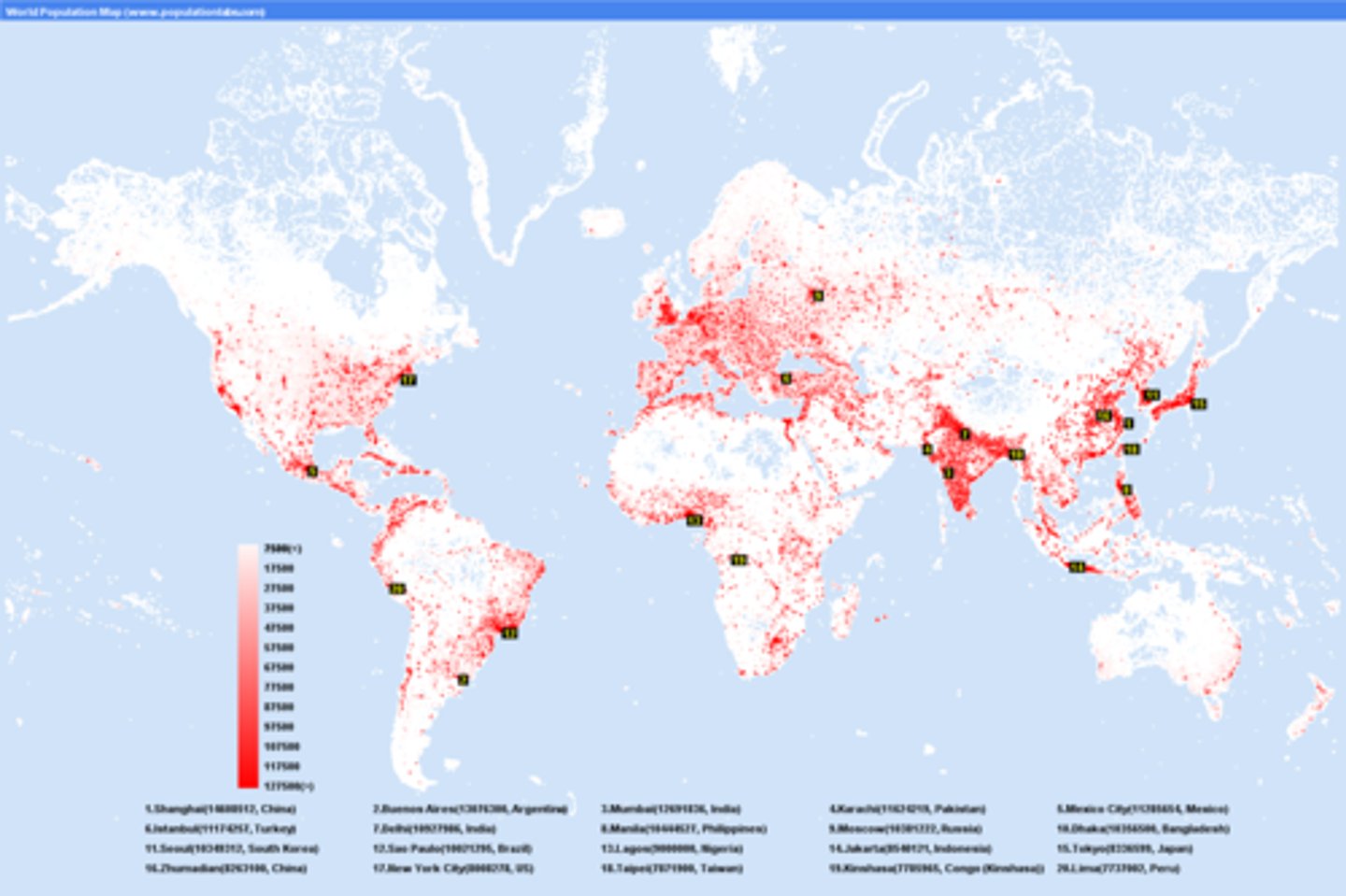
Population Density
The measure of the average populatio of people per square mile/kilometre How crowed an area is.
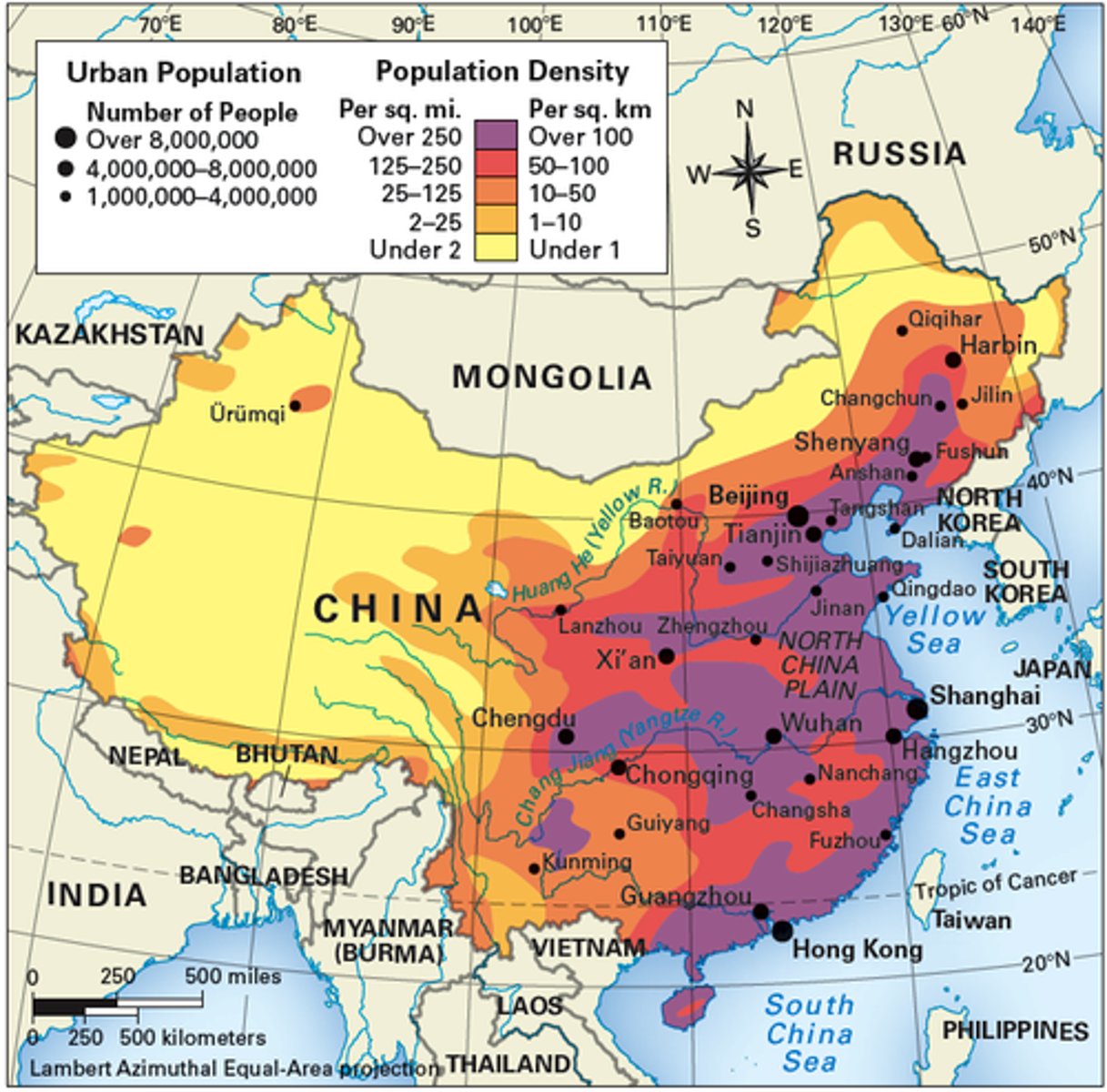
Megacities
10 million + peoples in a city.

Metacitites
20 million + peoples in a city.
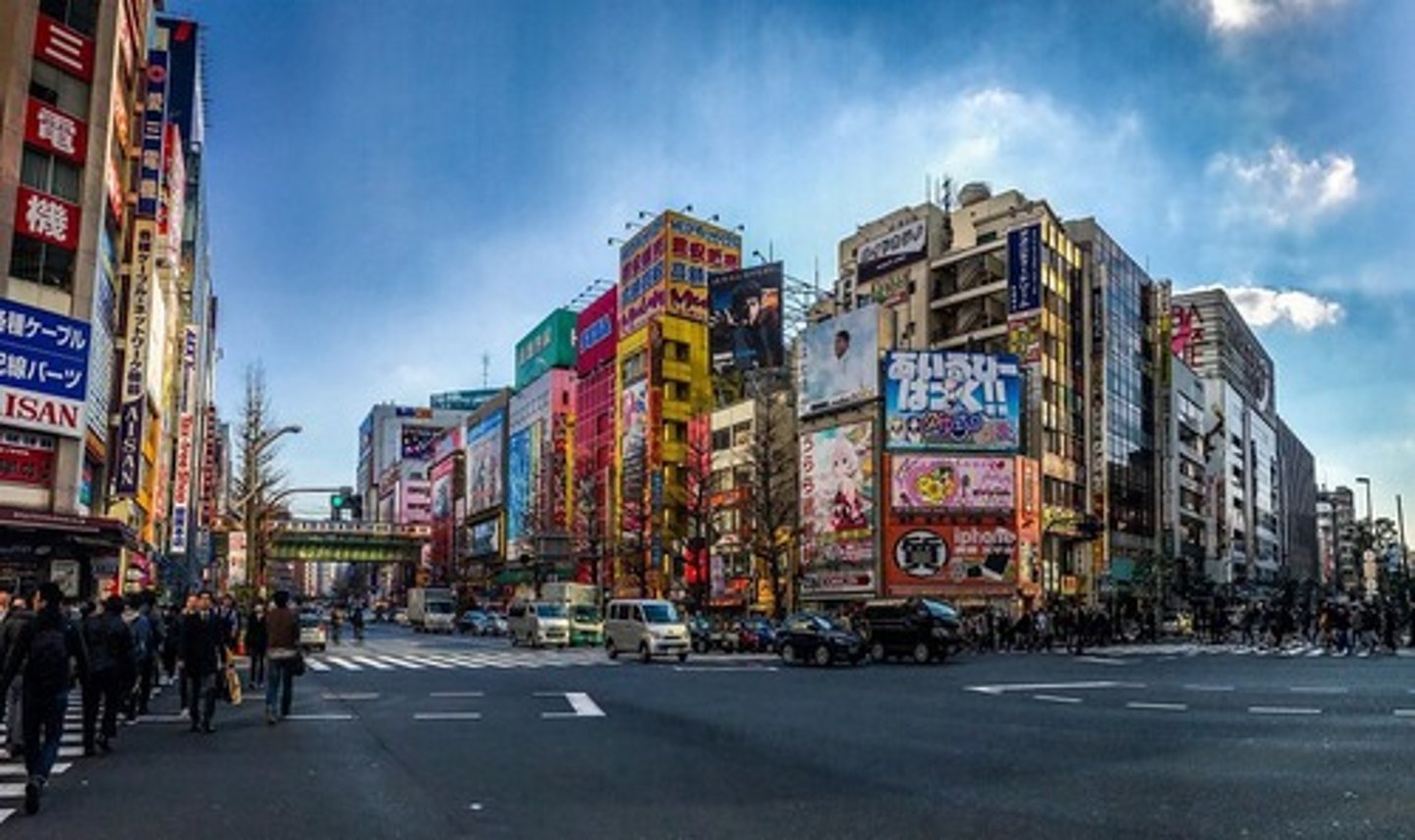
MDC (More Developed Country)
Countries with highly developed economies, high levels of industrialization, urbanization, advanced technological infrastructure and high standards of living. Stages 4 (low stationary) and 5 (declining) on the DTM. Germany, UK, Japan

NIC (Newly Industrialized Country)
Less developed countries with late expanding industrial economies and a developing trade status in the global market place. Vietnam, Philippines, Bangladesh, stage 3. Image is the BRICS states.
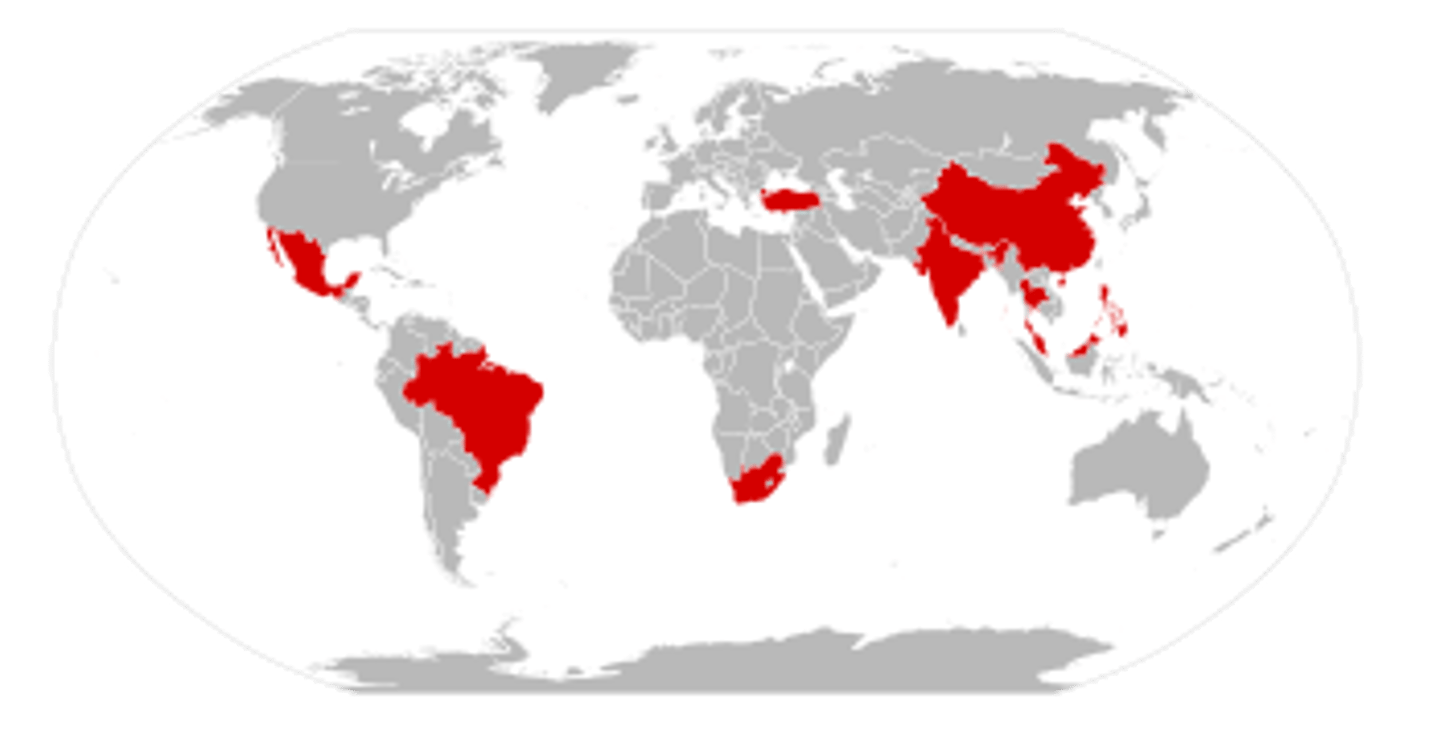
LDC (Less Developed Country)
A country that is at a relatively early expanding stage in the process of economic development, Stage 2. Afghanistan, Bolivia, Niger.
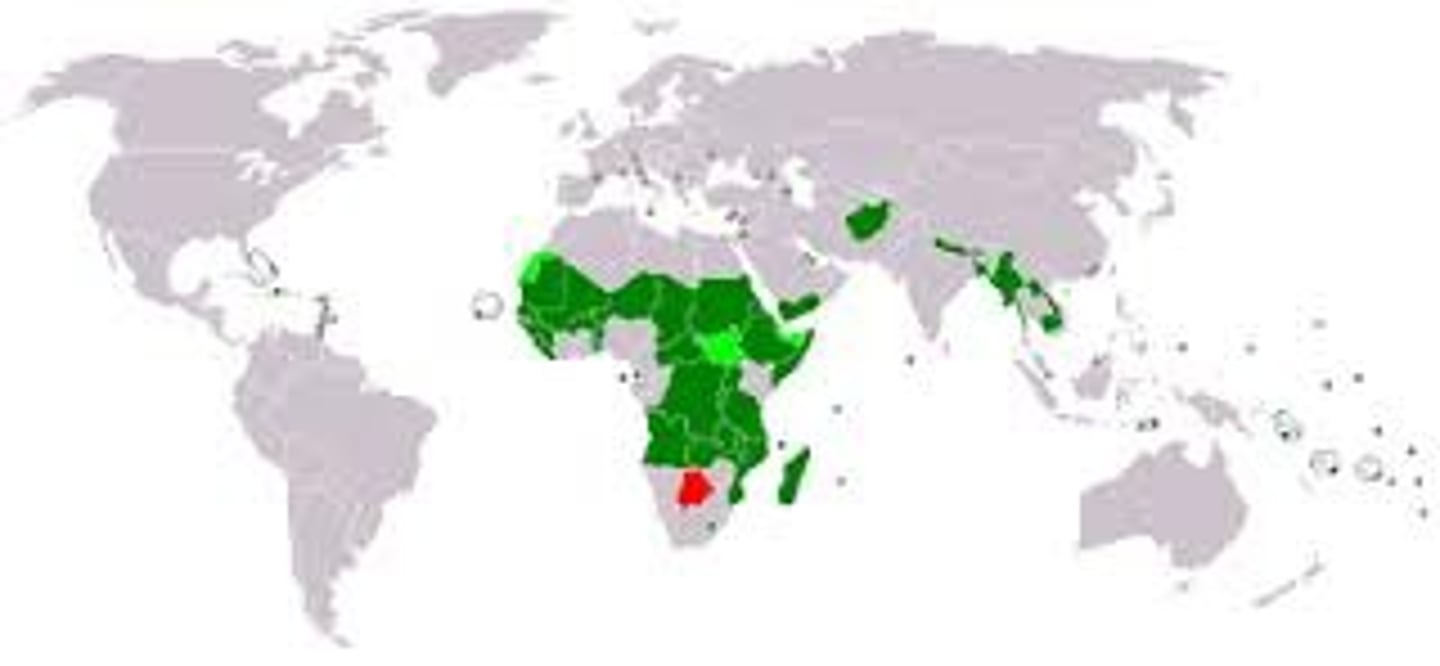
Push Factors of Immigration
Reasons people emigrate and leave their homes such as economic troubles, overcrowding, poverty.
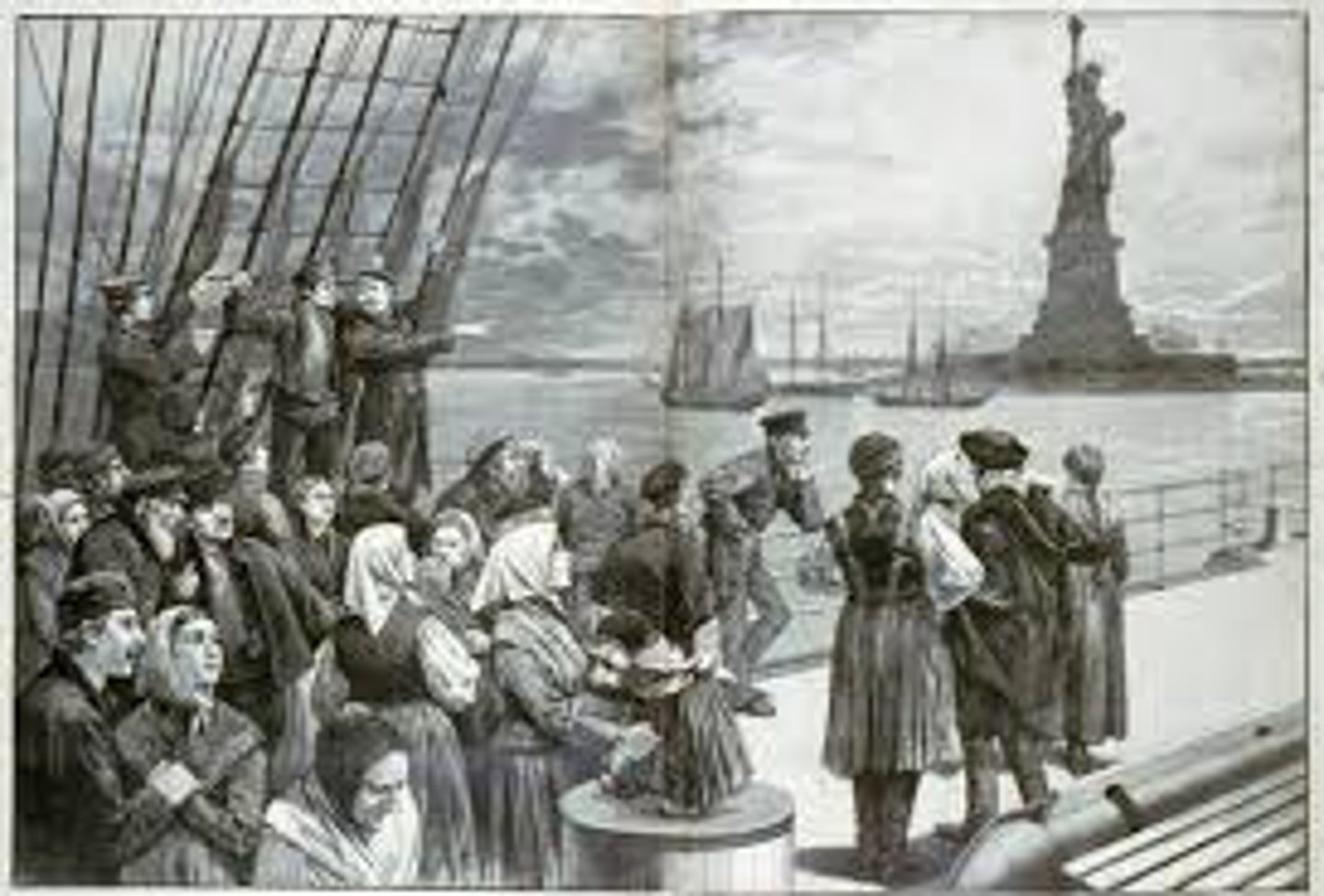
Pull Factors of Immigration
Reasons to migrate to a new area such as
Economic Opportunity ($)
Jobs/ workers needed
Land, decreased cost of living
Peace and stability
Freedom to make a better life
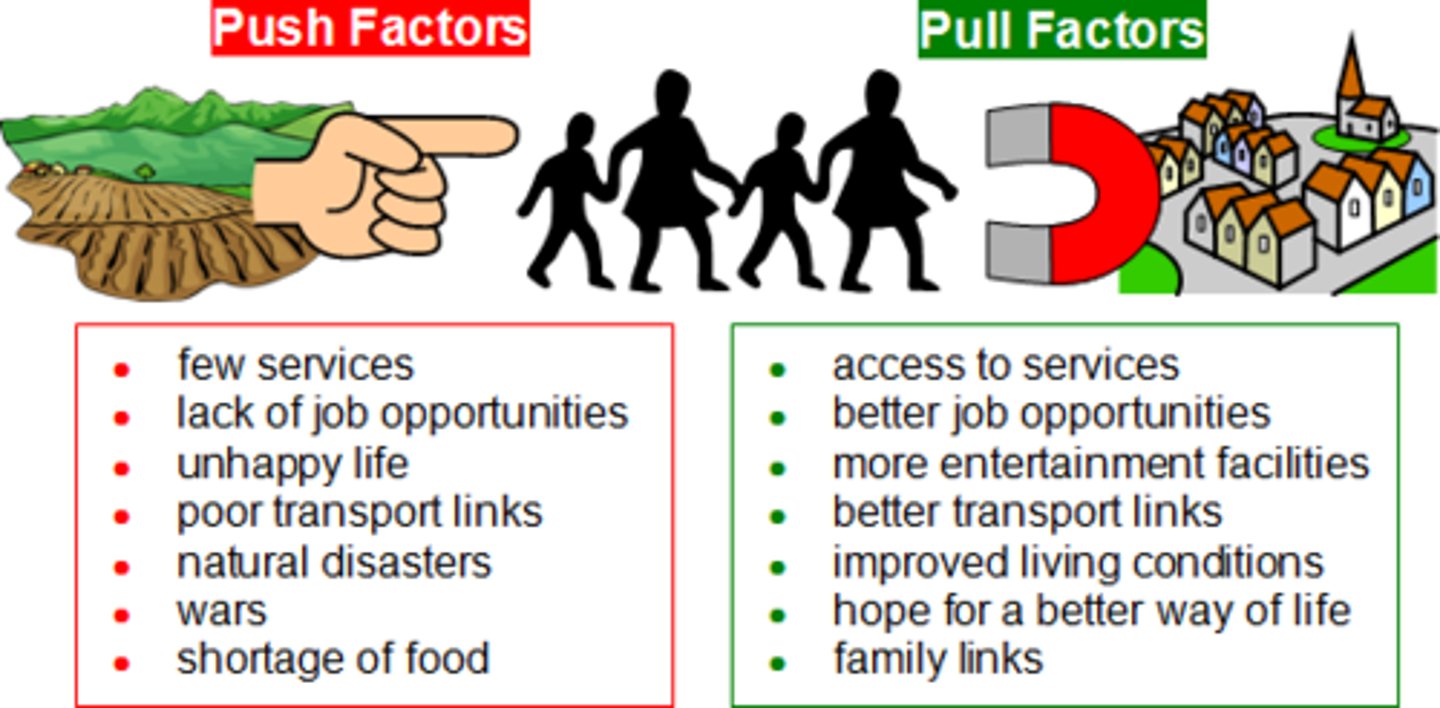
Forced Migration
Human migration flows in which the movers have no choice but to relocate typically due to political instability, ethnic cleansing, natural disasters, slavery.
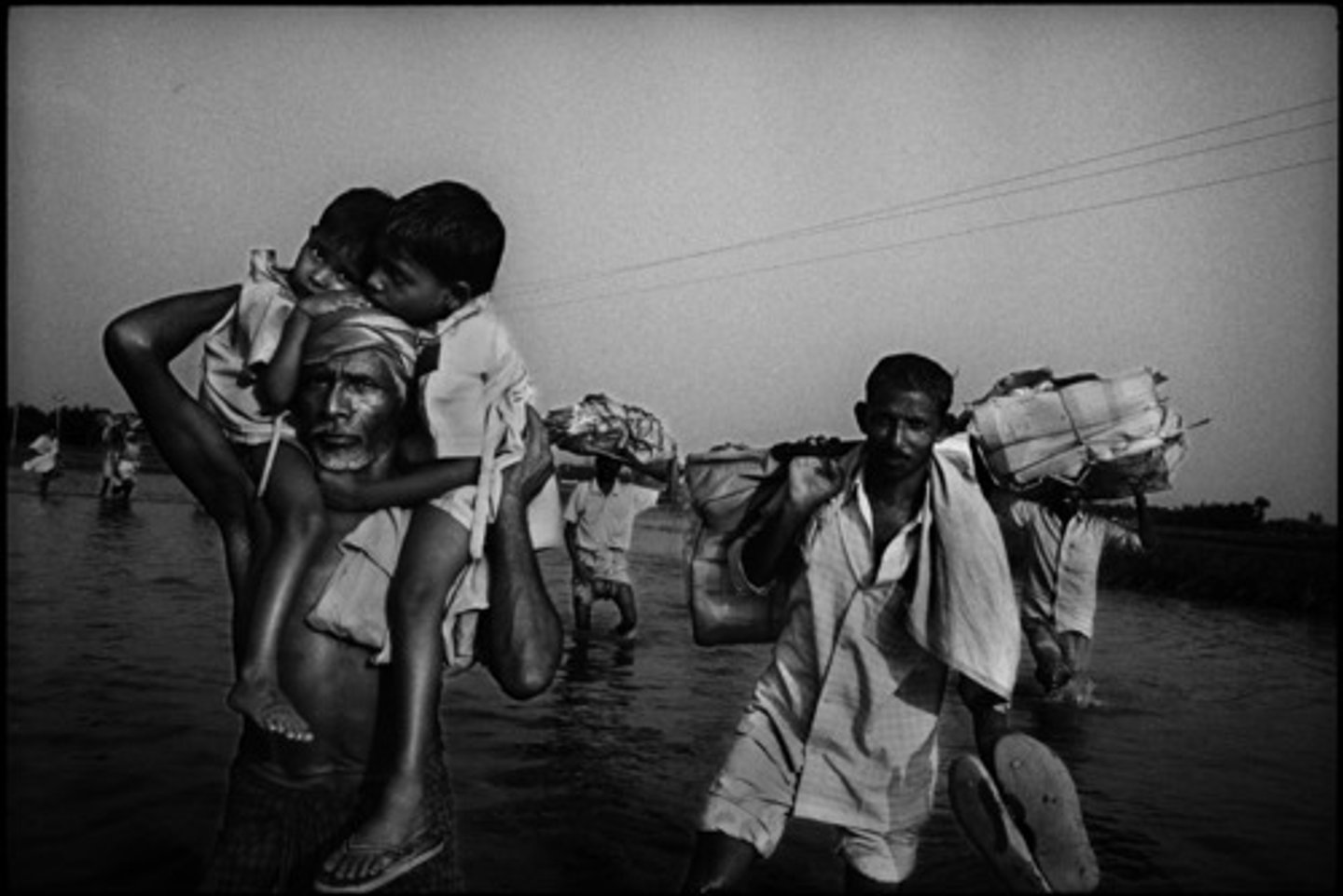
Arithmetic Population Density
The total number of people divided by the total land area.
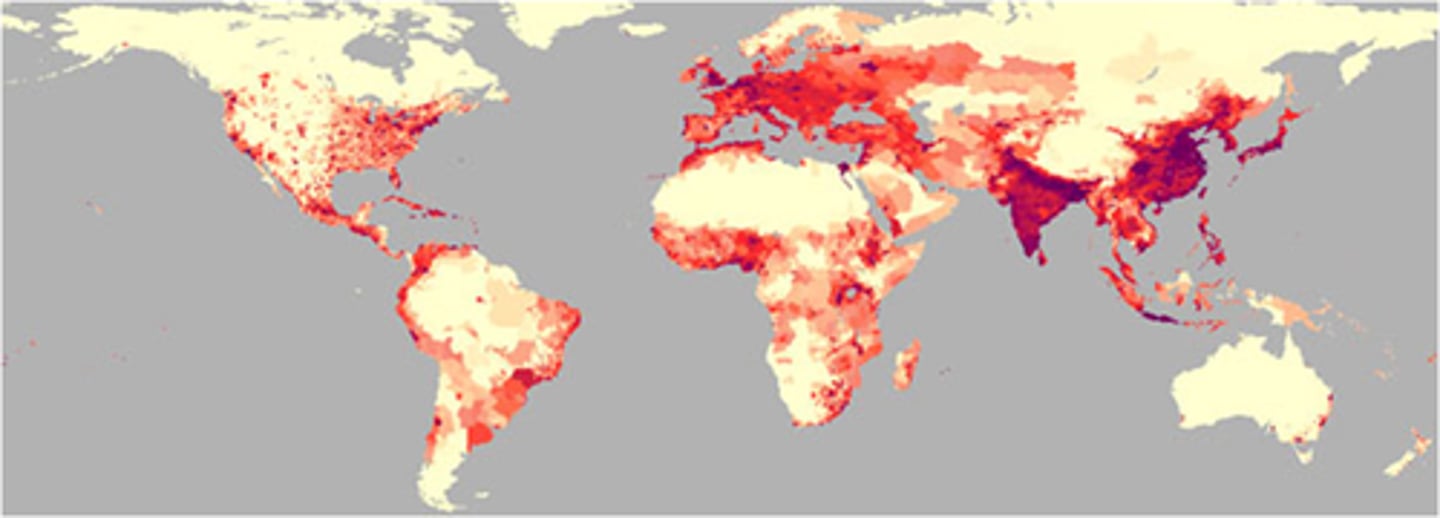
Physiological Population Density
The number of people per unit of area of arable land, which is land suitable for agriculture.
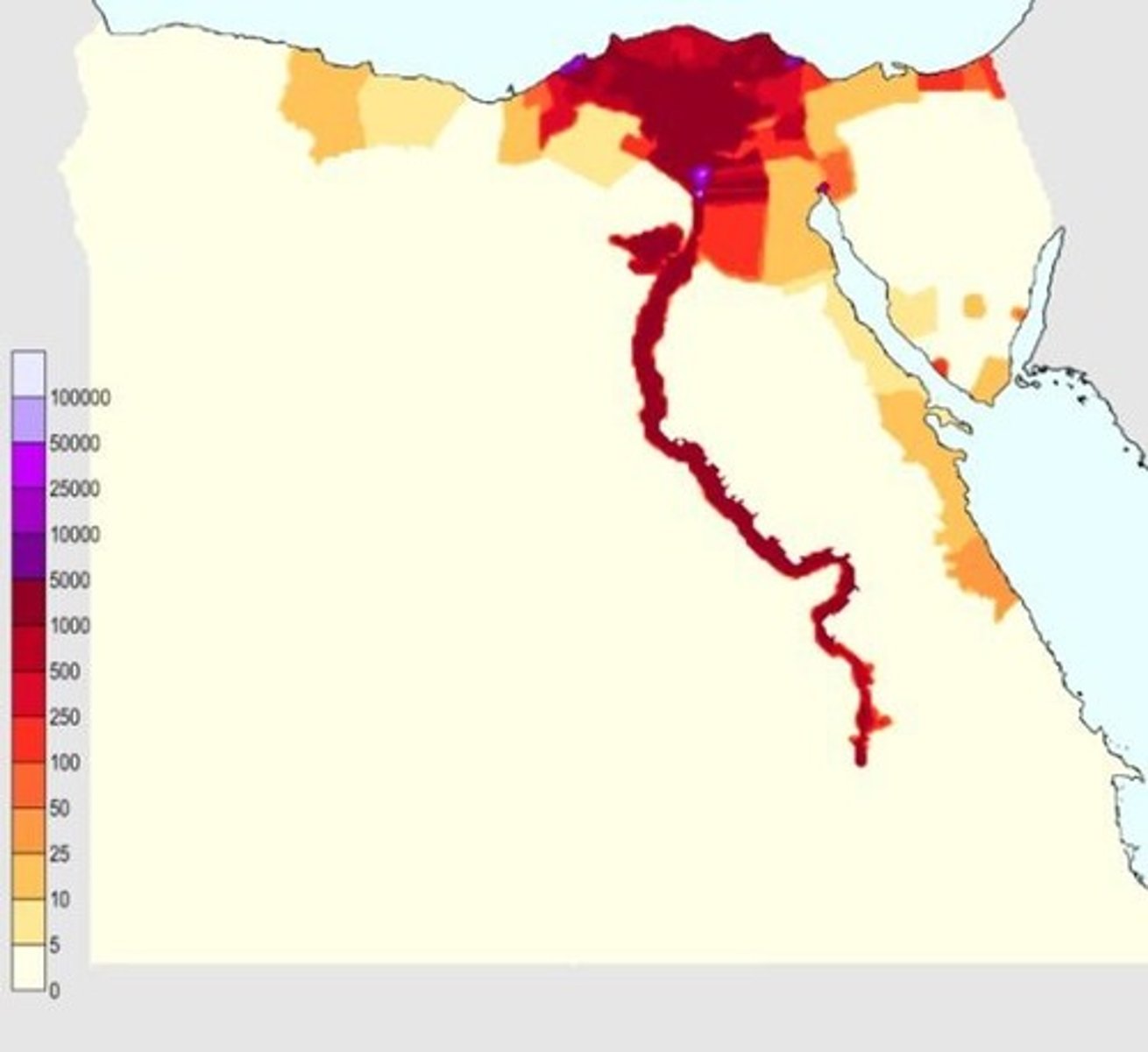
Carrying Capacity
Largest number of individuals of a population that a environment can support, overtime this can be increased due to technological innovations and the endorsement of sustainability.
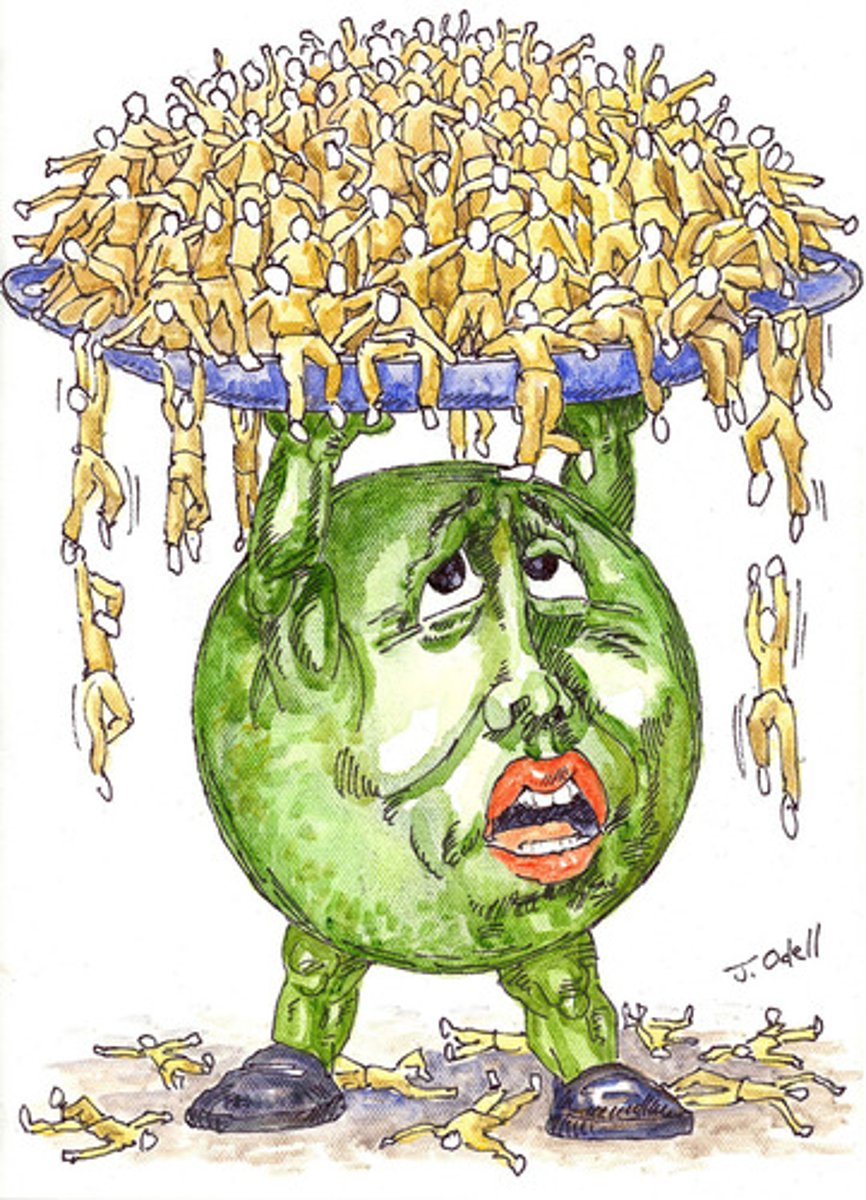
Population Pyramid
A bar graph representing the distribution of population by age and sex.
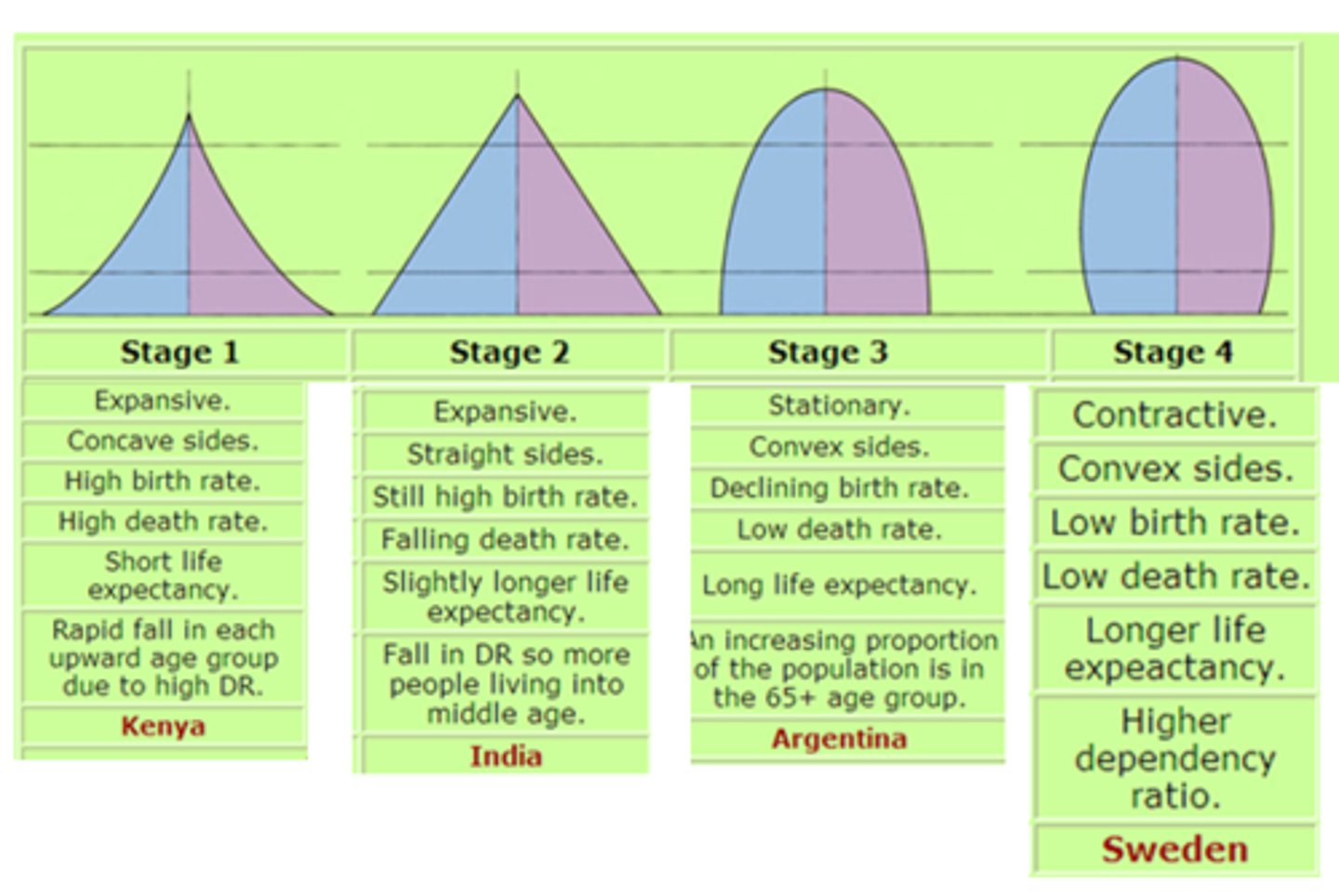
Aging Population
A population in which the percentage that is age 65 and older is increasing relative to other age groups. Governments need to find ways to looking after the elderly. This is stage 5, a cup shape. Japan/Norway are good examples.
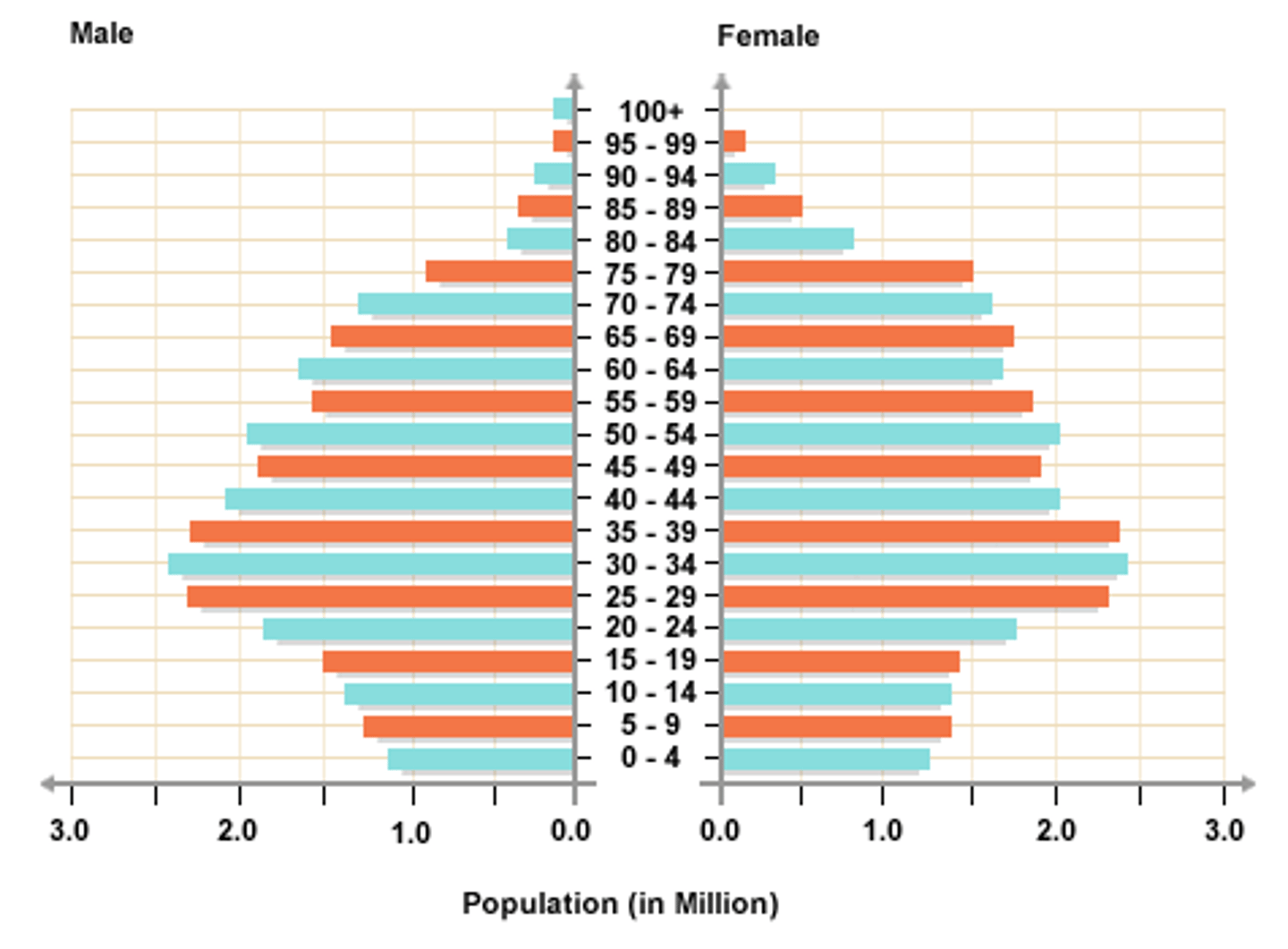
Total Fertility Rate (TFR)
The average number of children a woman will have throughout her childbearing years. In stage 2, triangle shape. Women are afforded little education and opportunity.
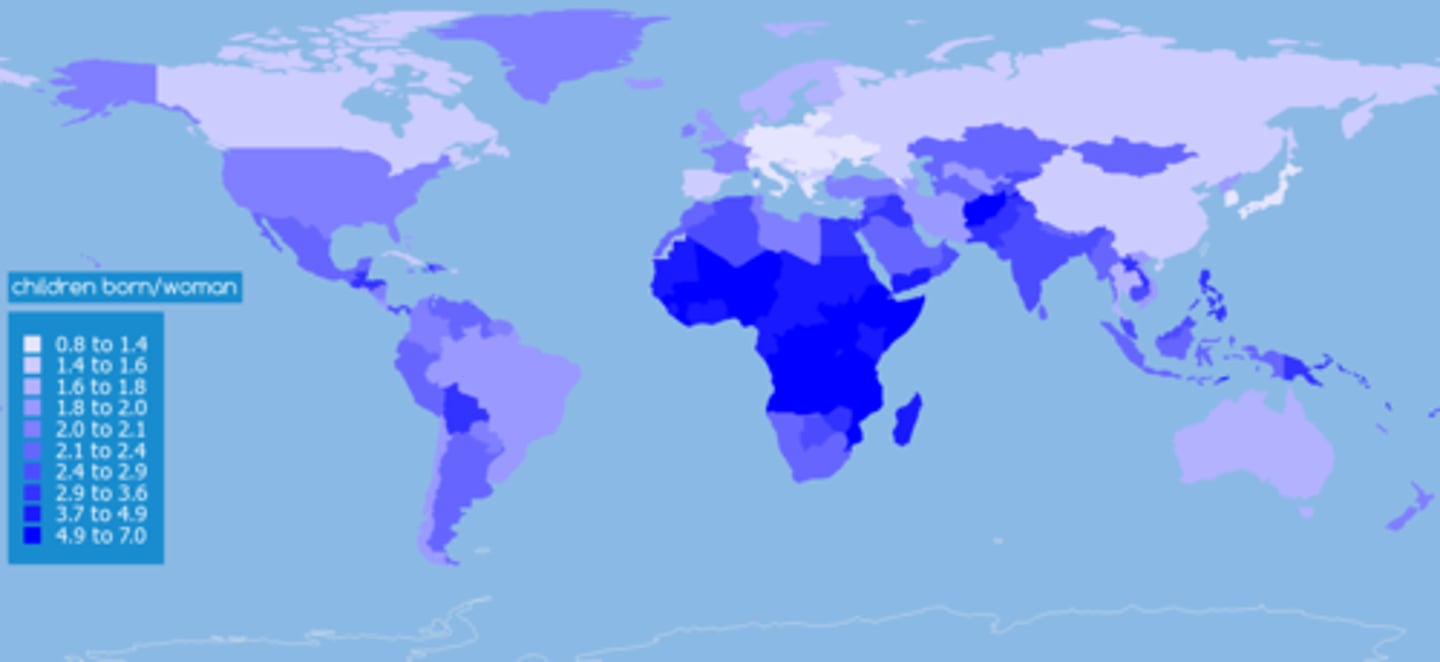
Dependency Ratio
The number of people who are too young or too old to work, compared to the number of people in their productive years. Potential workforce is 15-64.
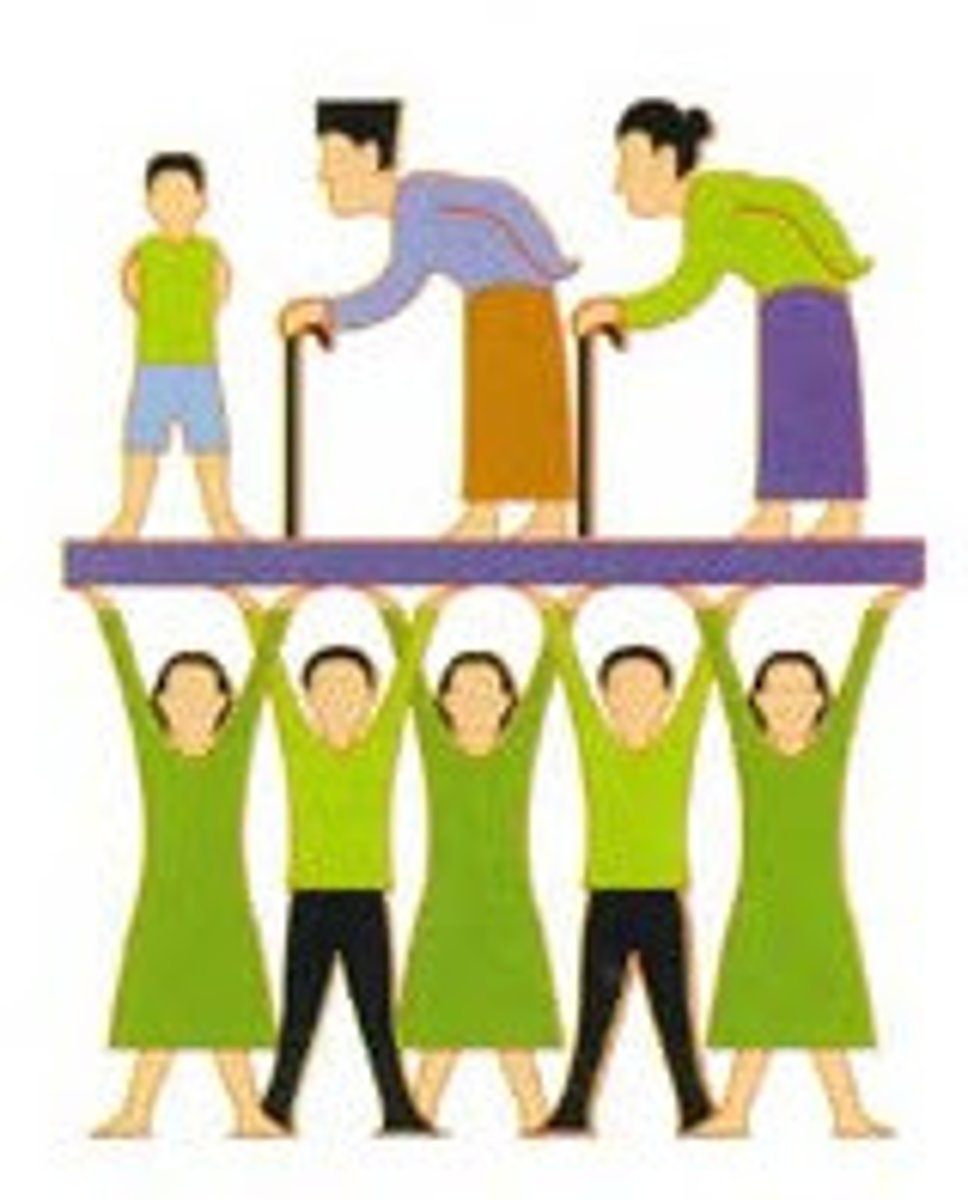
2.1 Replacement Level
The number of children a woman must have to replace herself and her partner in a population. The .1% accounts for potential infant mortality. This is a stage 4 box pyramid low stationary population.
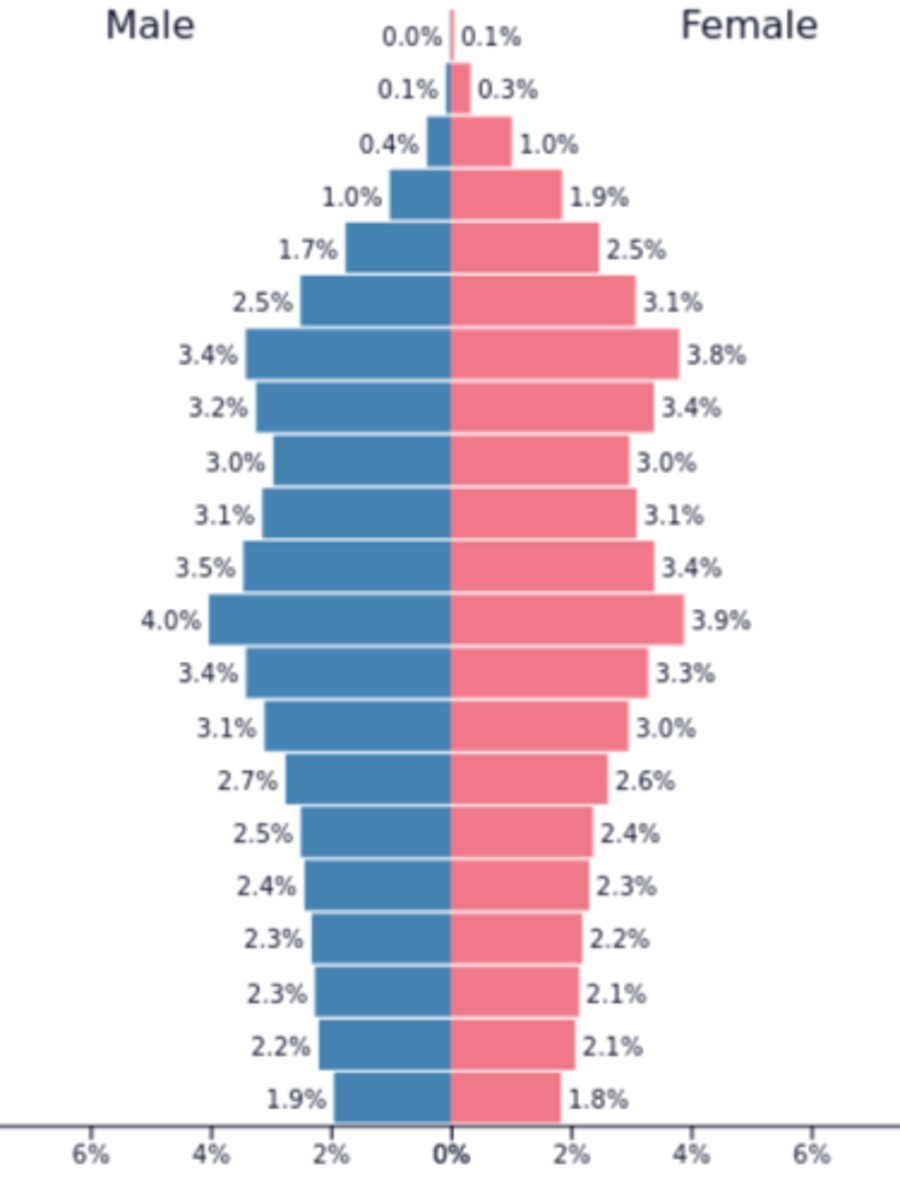
J-curve
Growth that depicts population exponential growth. For 10,000 years CDR and CBR were hight and equal, earth's population was limited however with the advent of the industrial revolution population grew exponentially, CDR was reduced as was CBR allowing for substantial population growth.
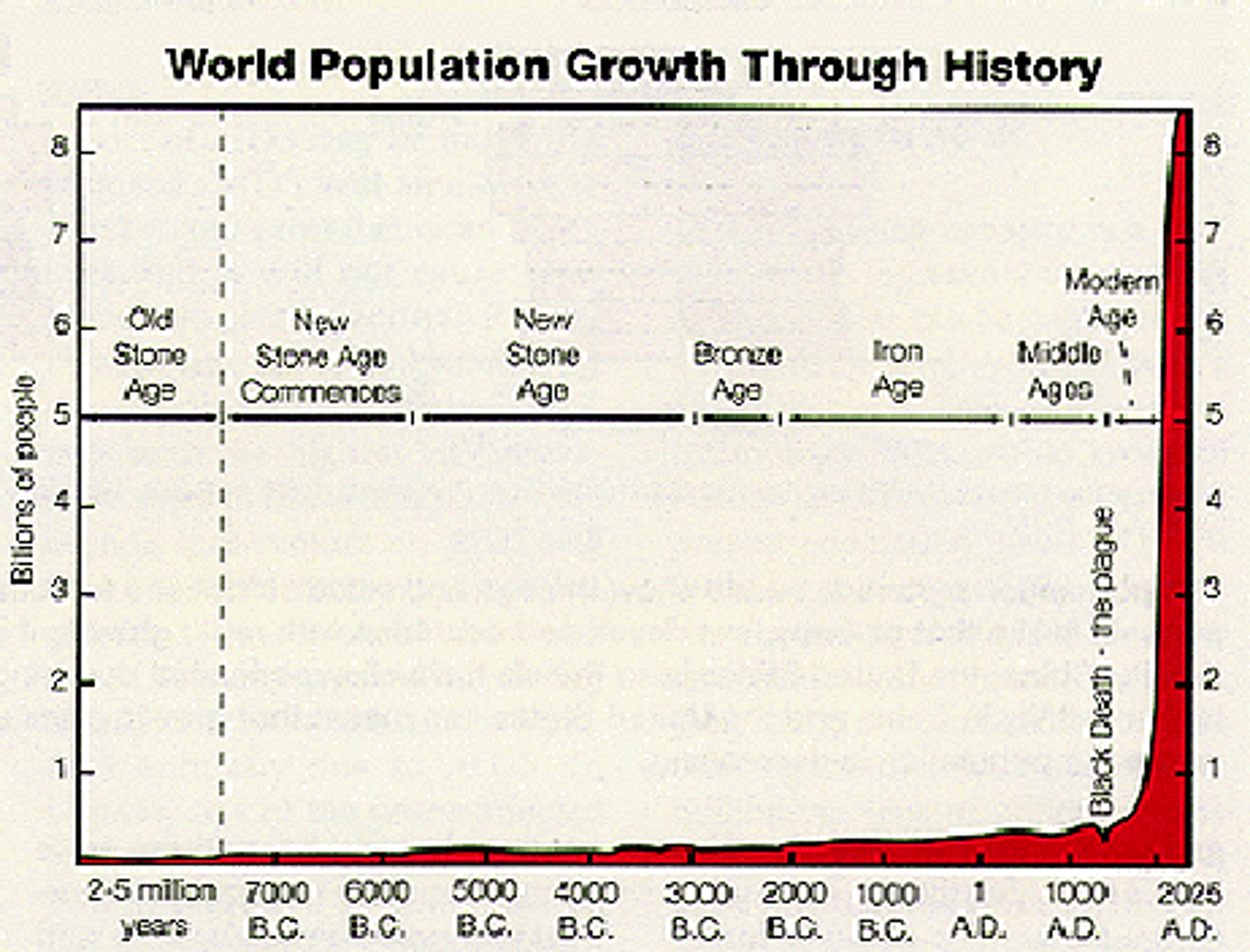
Potential Workforce
people ages 15-64 that are expected to be the society's labor force.
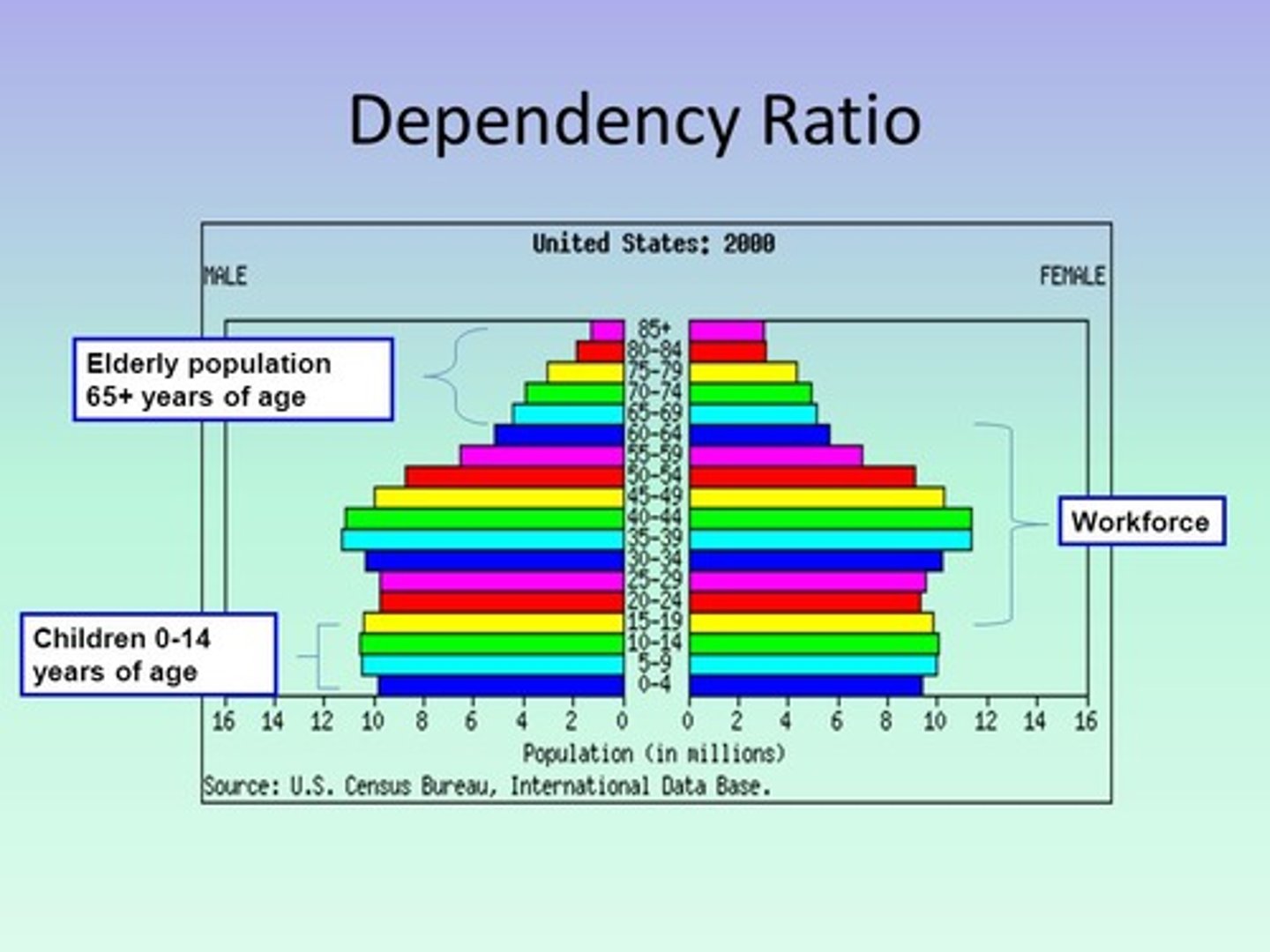
Baby Boom
A cohort of individuals born in the United States between 1946 and 1964, which was just after World War II in a time of relative peace and prosperity. These conditions allowed for better education and job opportunities, encouraging high rates of both marriage and fertility.
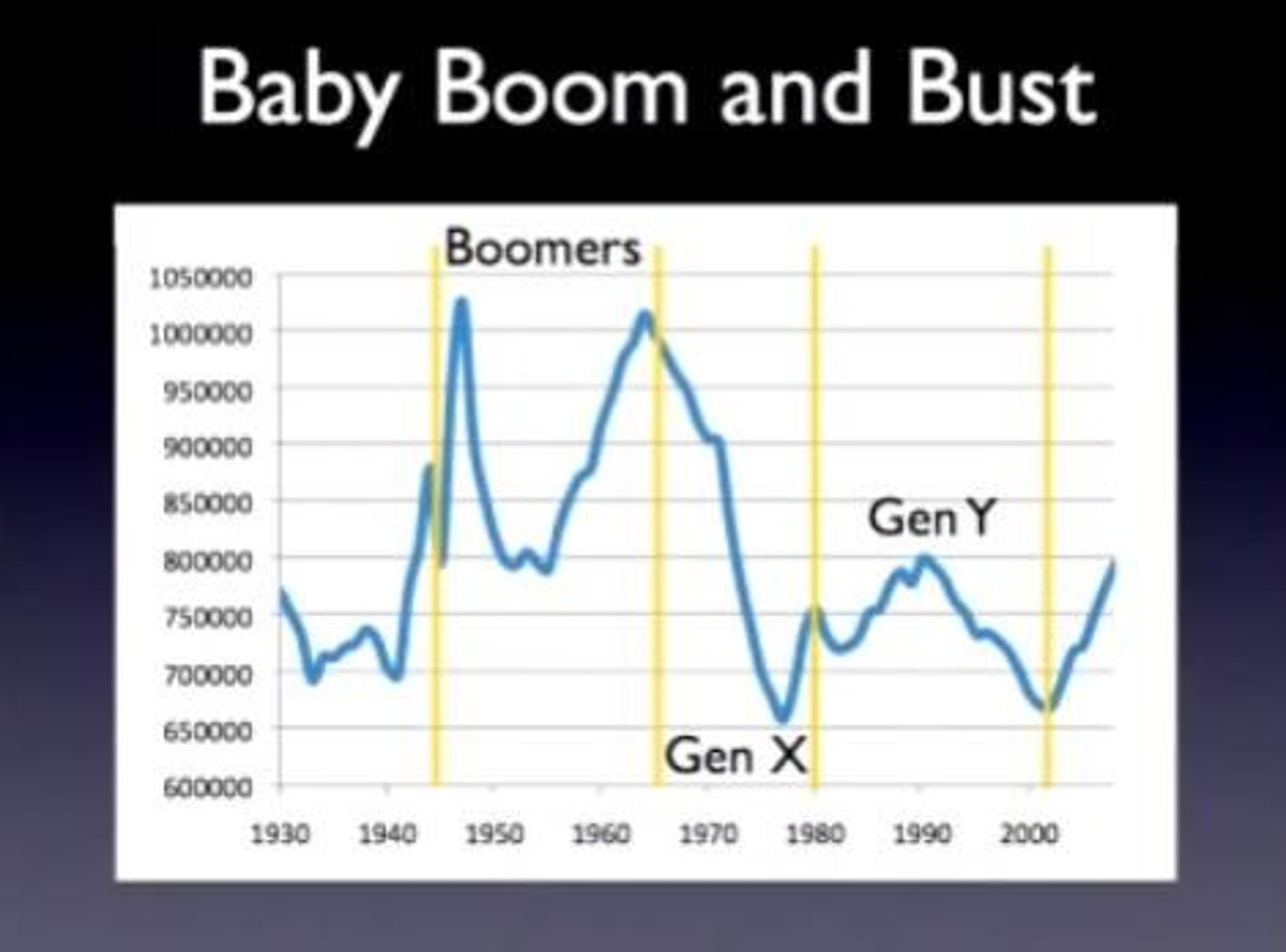
Baby Busters: "Generation X"
After the baby boom birth rates decrease until the children of baby boomers reach childbearing age.
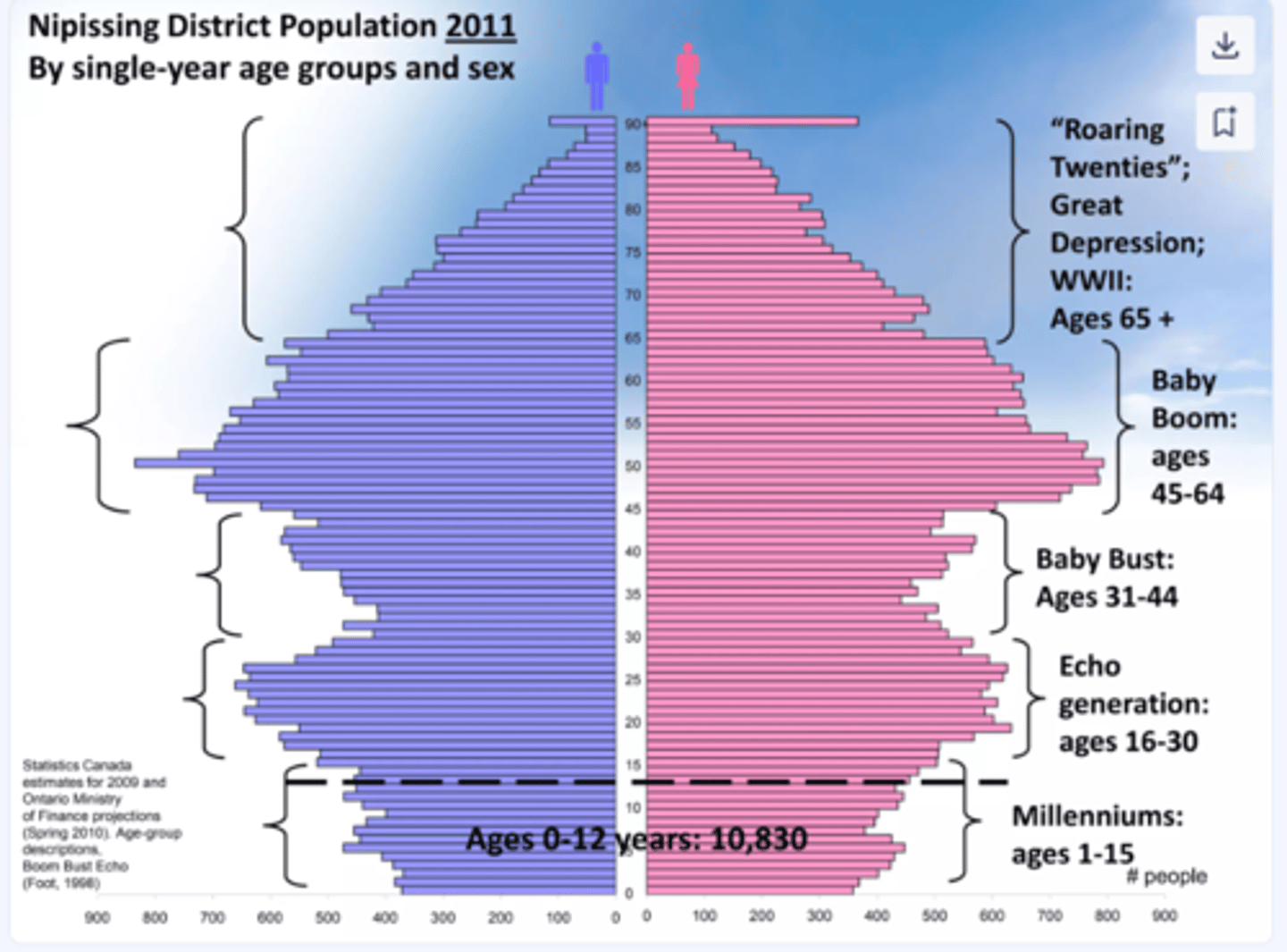
echo (population pyramid)
When a country has a high number of baby boomers when they reach child bearing age you will see a bulge in the pyramid. Since it reflects an early boom it's called an echo. Ex: as of 2015 children in high school were the last of the echo cohorts and their parents were the last of the baby boomers.
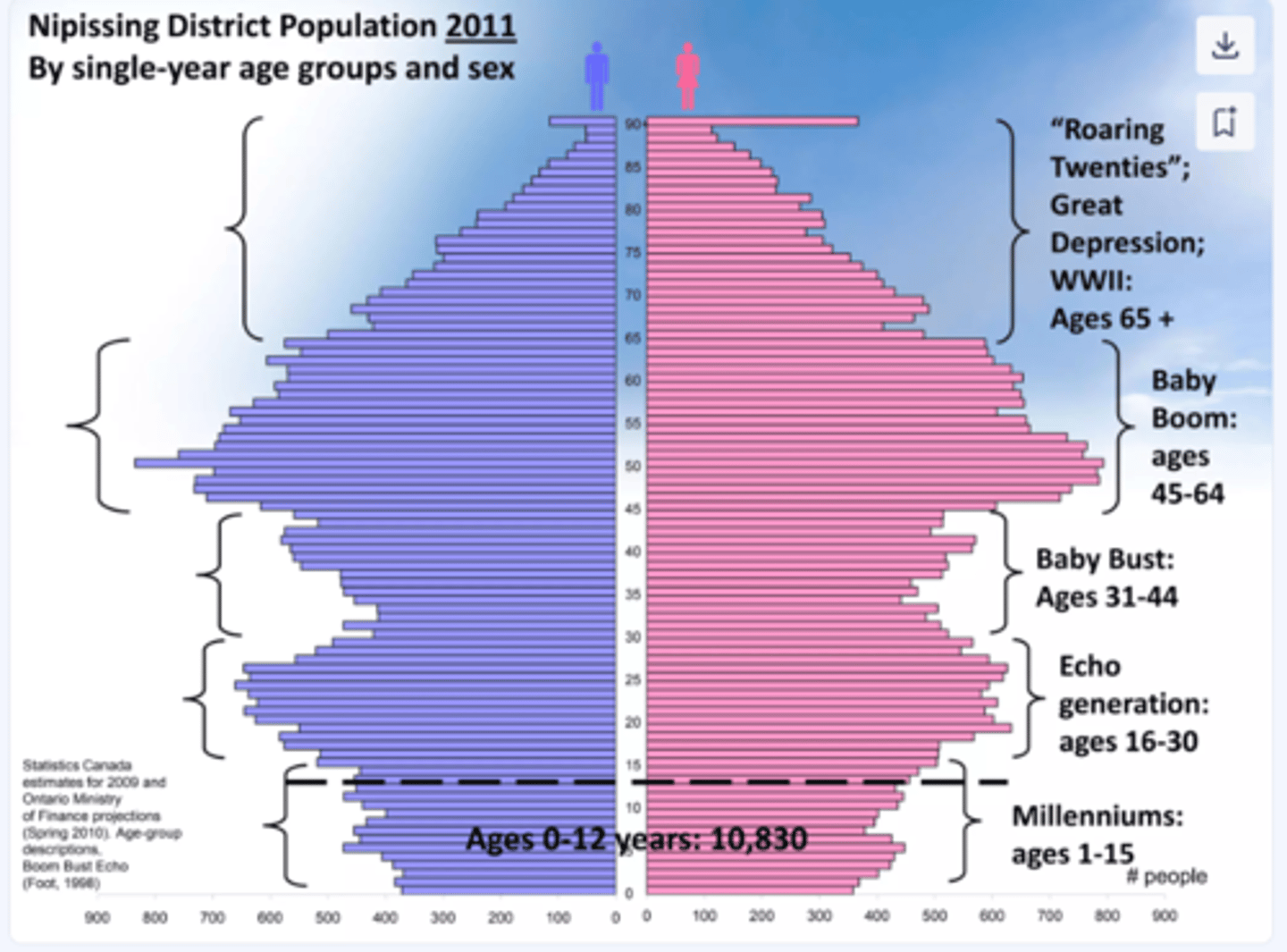
CBR
The total number of live births in a year for every 1,000 people alive in the society. Crude Birth Rate
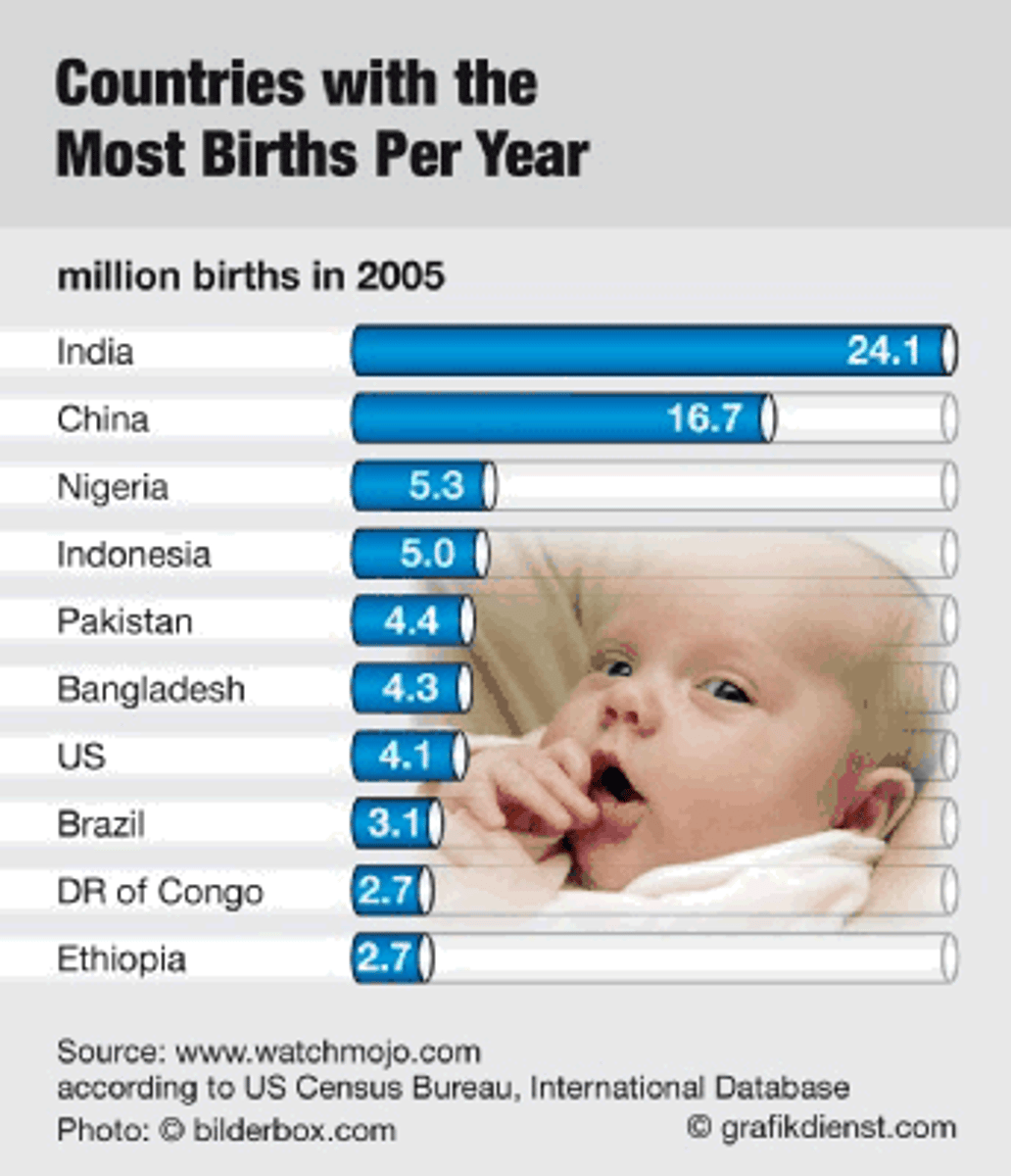
CDR
The total number of deaths in a year for every 1,000 people alive in the society. Crude Death Rate
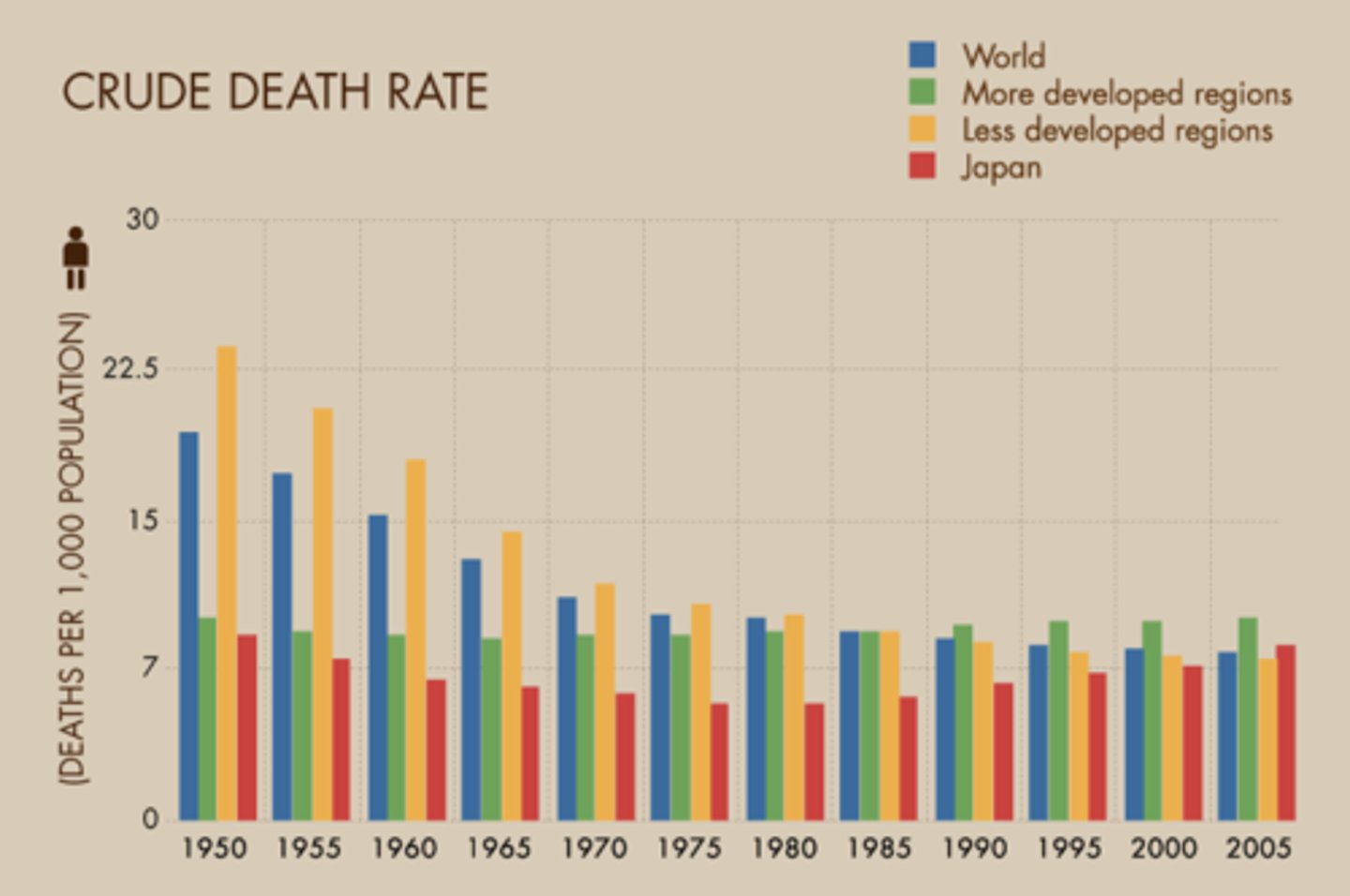
TFR
The average number of children a woman will have throughout her childbearing years.
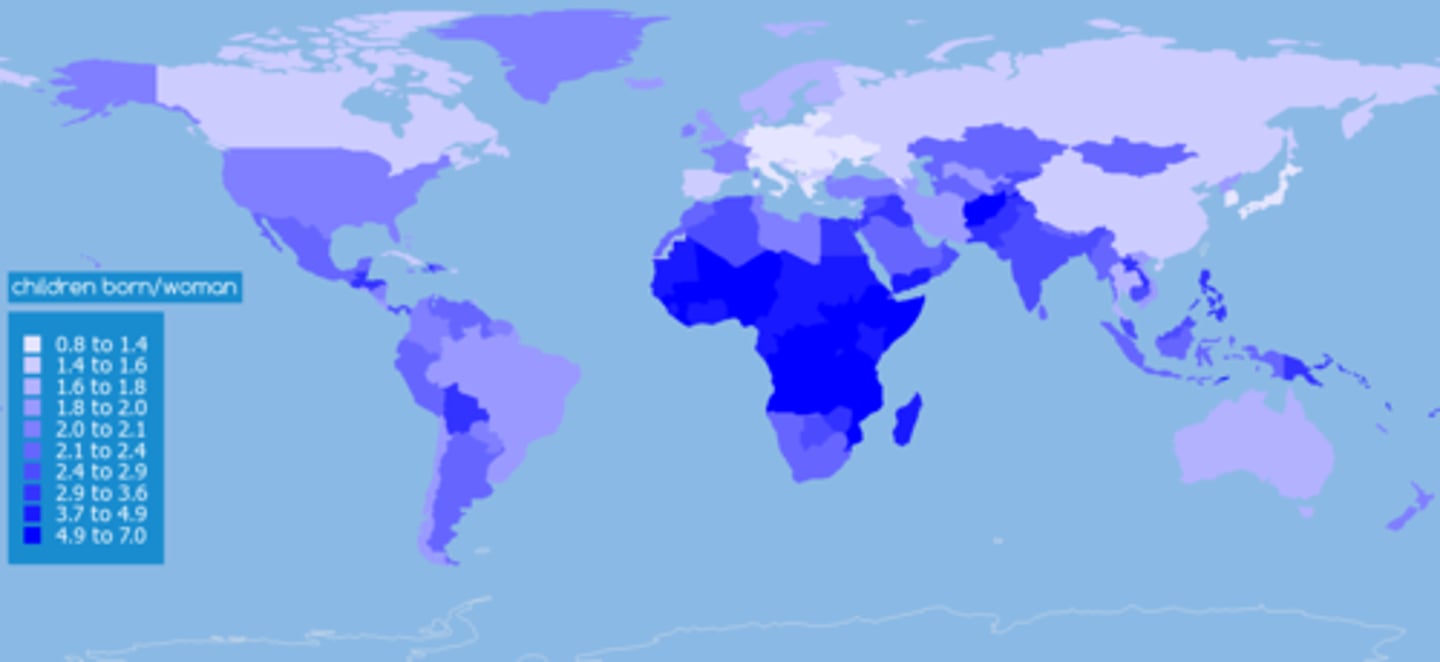
Demographic Balancing Equation
The future population = current population + (number of births - number of deaths) + (number of immigrants - number of emigrants).
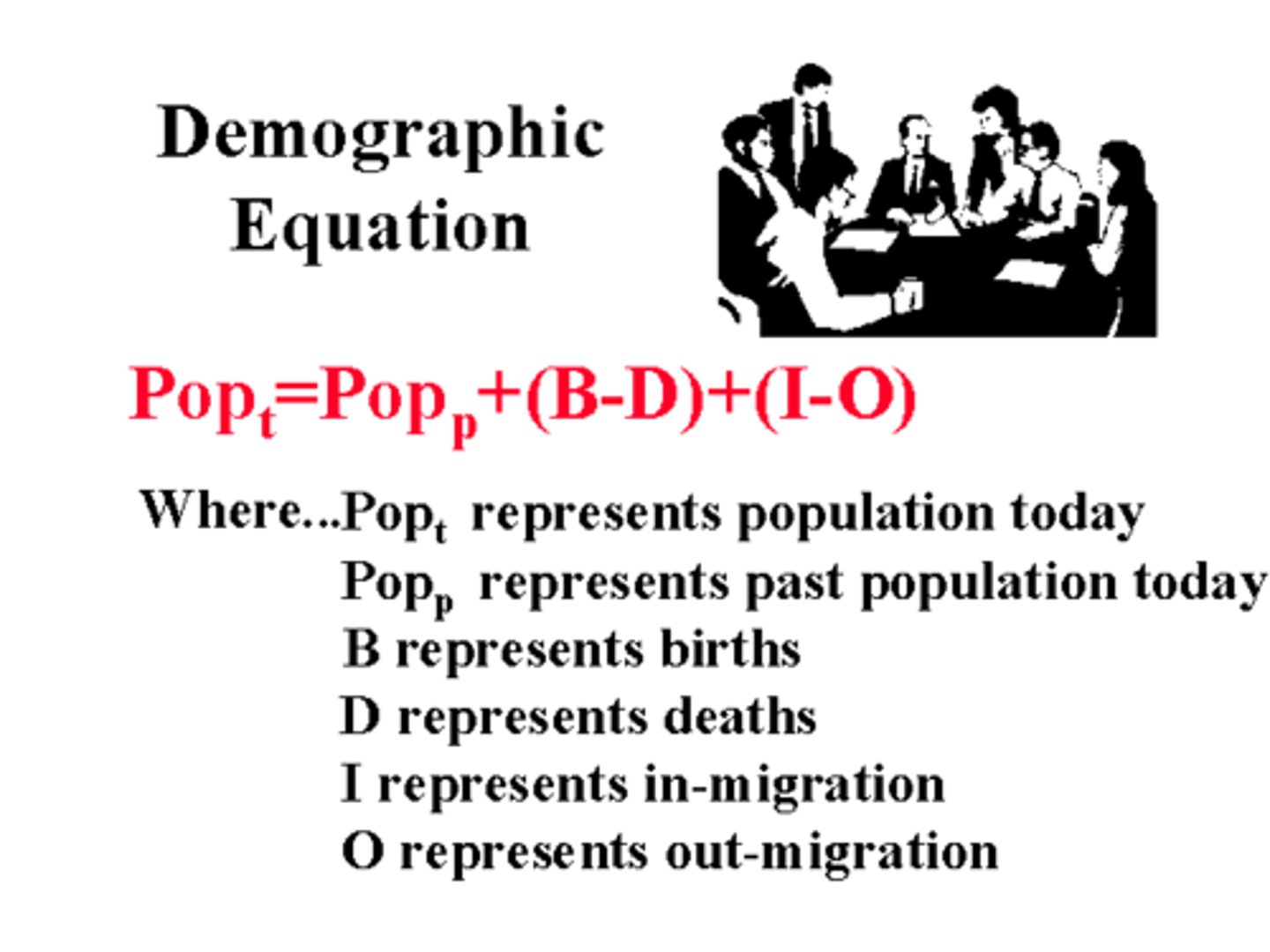
Immigrants
People who have left the country of their birth to live in another country.
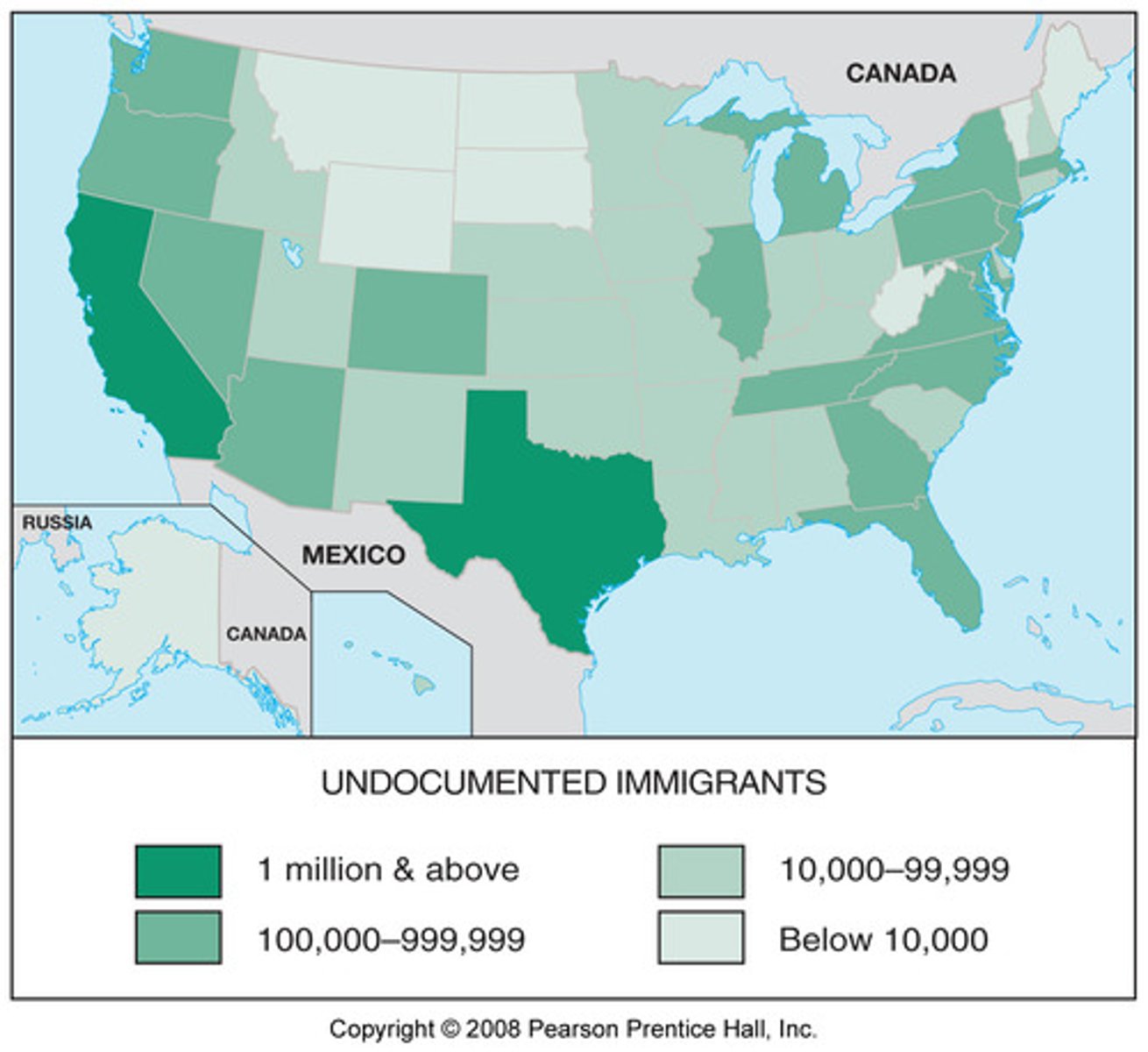
Emigrants
People who leave a country to live somewhere else.

life Expectancy
The average number of years an individual can be expected to live, given current social, economic, and medical conditions. Life expectancy at birth is the average number of years a newborn infant can expect to live.
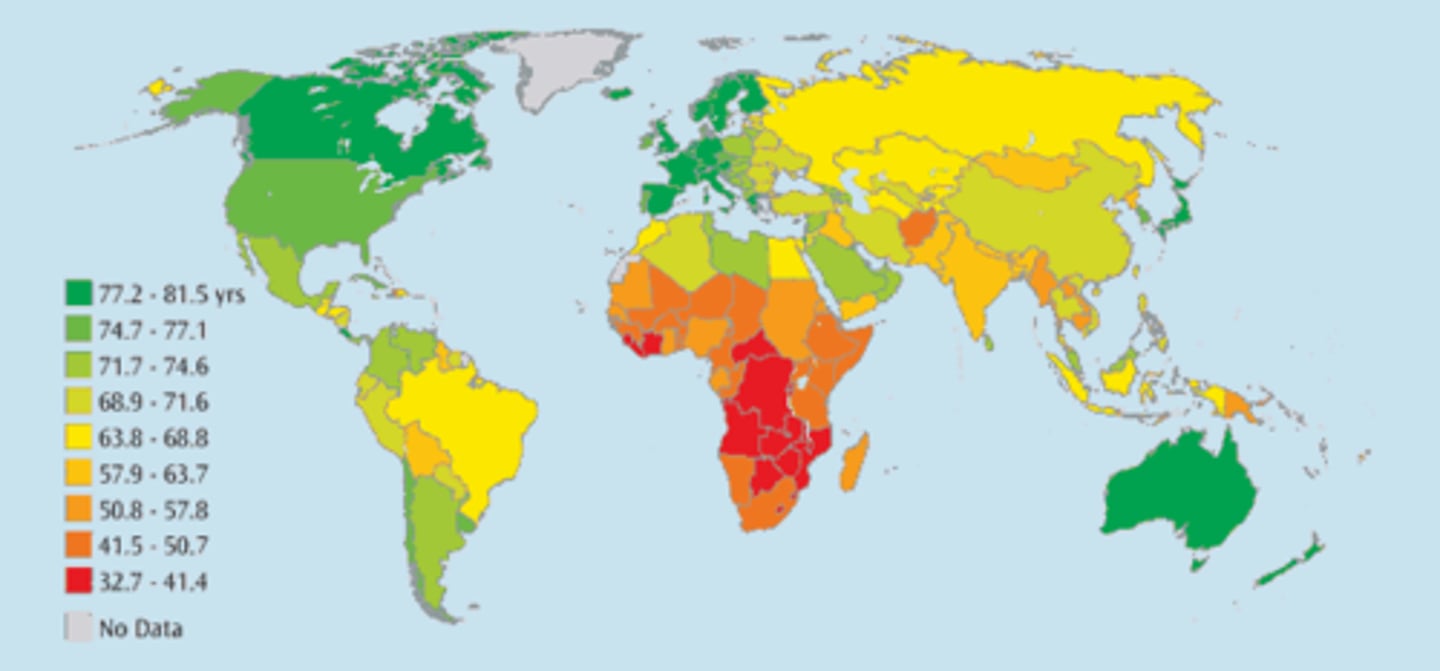
Infant Mortality Rate (IMR)
The total number of deaths in a year among infants under 1 year old for every 1,000 live births in a society.
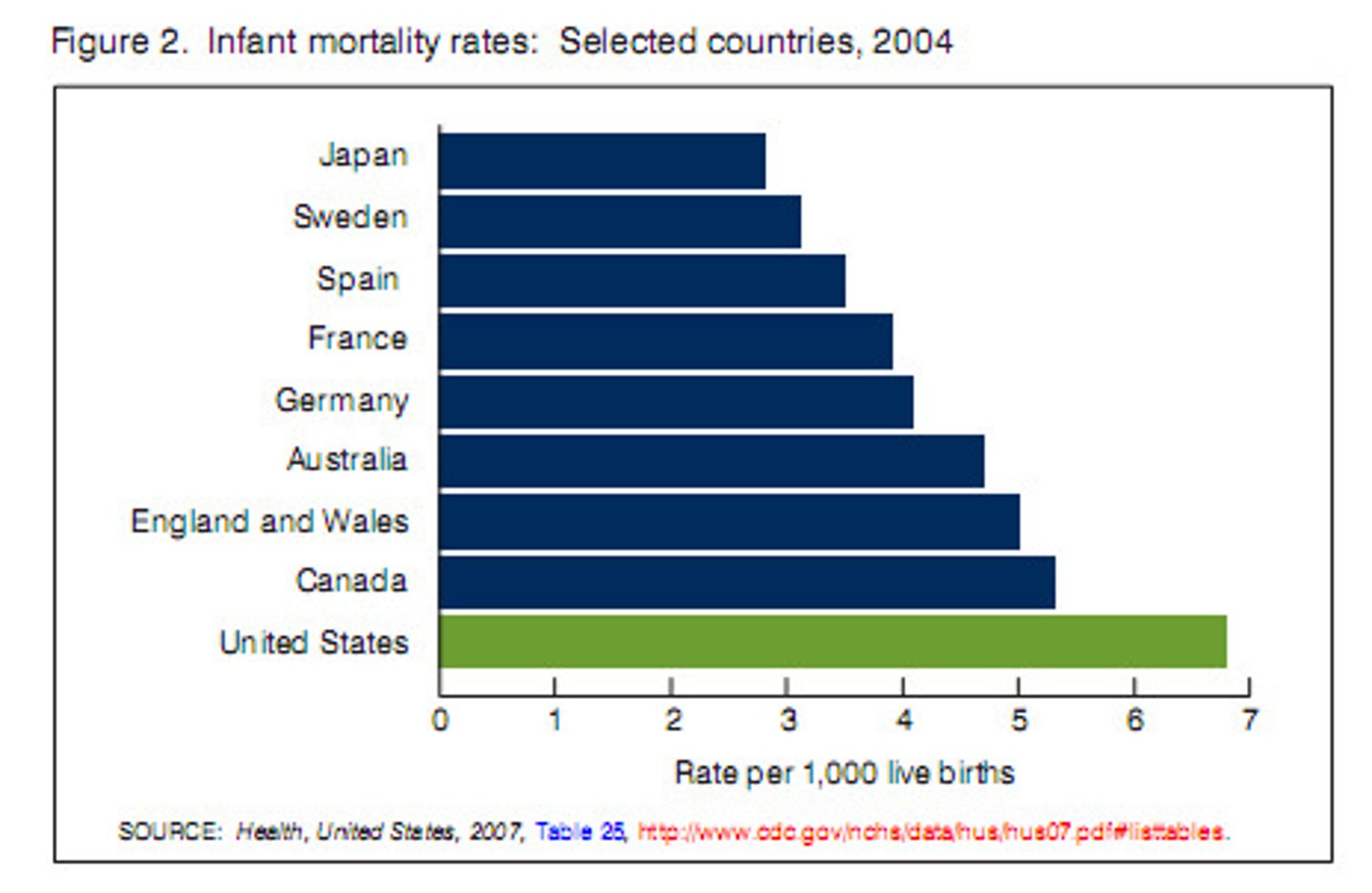
Factors that increase life expectancy.
Mechanized food production, improved seeds, fertilizers, food security, sewer systems, fresh water and water waste systems, vaccines and access to medical care.

RNI
Rate of Natural Increase; (crude birth rate) - (crude death rate)
does not factor in emigration and/or immigration.
RNI= (CBR-CDR) / 10 add a percent sign. Currently CBR=~20, CDR=~8. Hence positive global population growth.
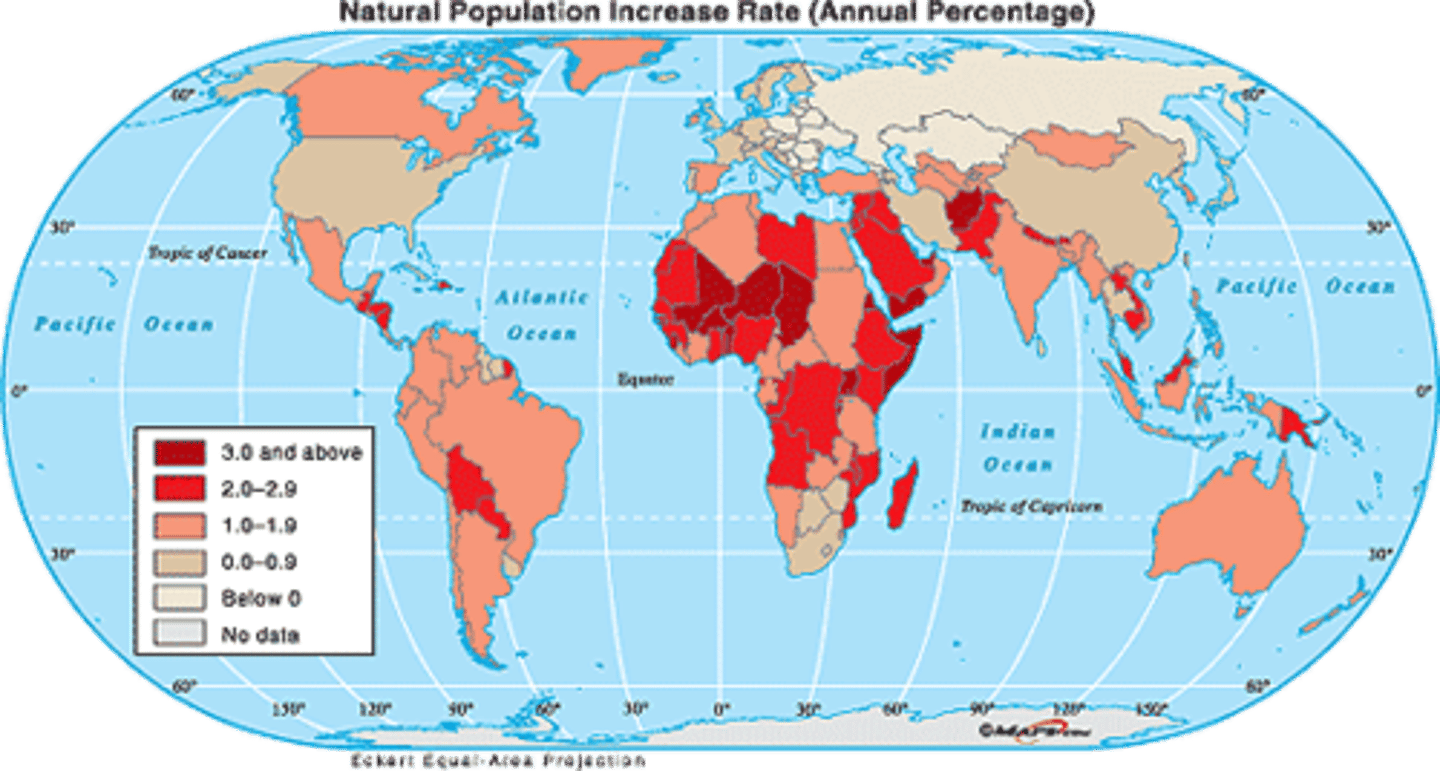
Population Doubling Time
The number of years it takes a population to double; calculated by dividing the number 72 by the rate of natural increase.
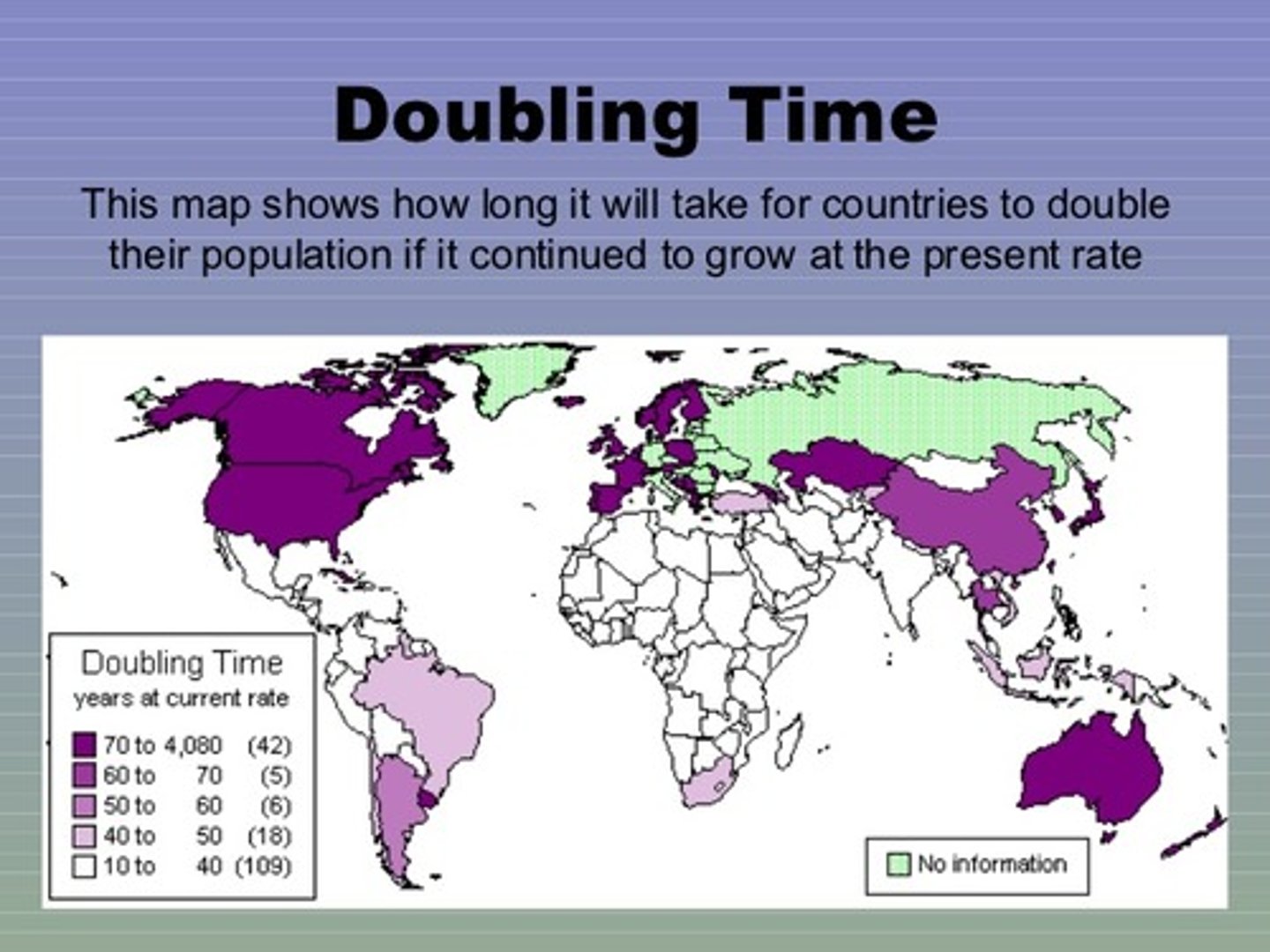
Shadow Economy
An informal economy in more developed countries that is not regulated by local government. Cash transaction, trading of services, because it is not regulated it cannot be directly taxed and typically this hiders and NIC from developing infrastructure at a faster rate.
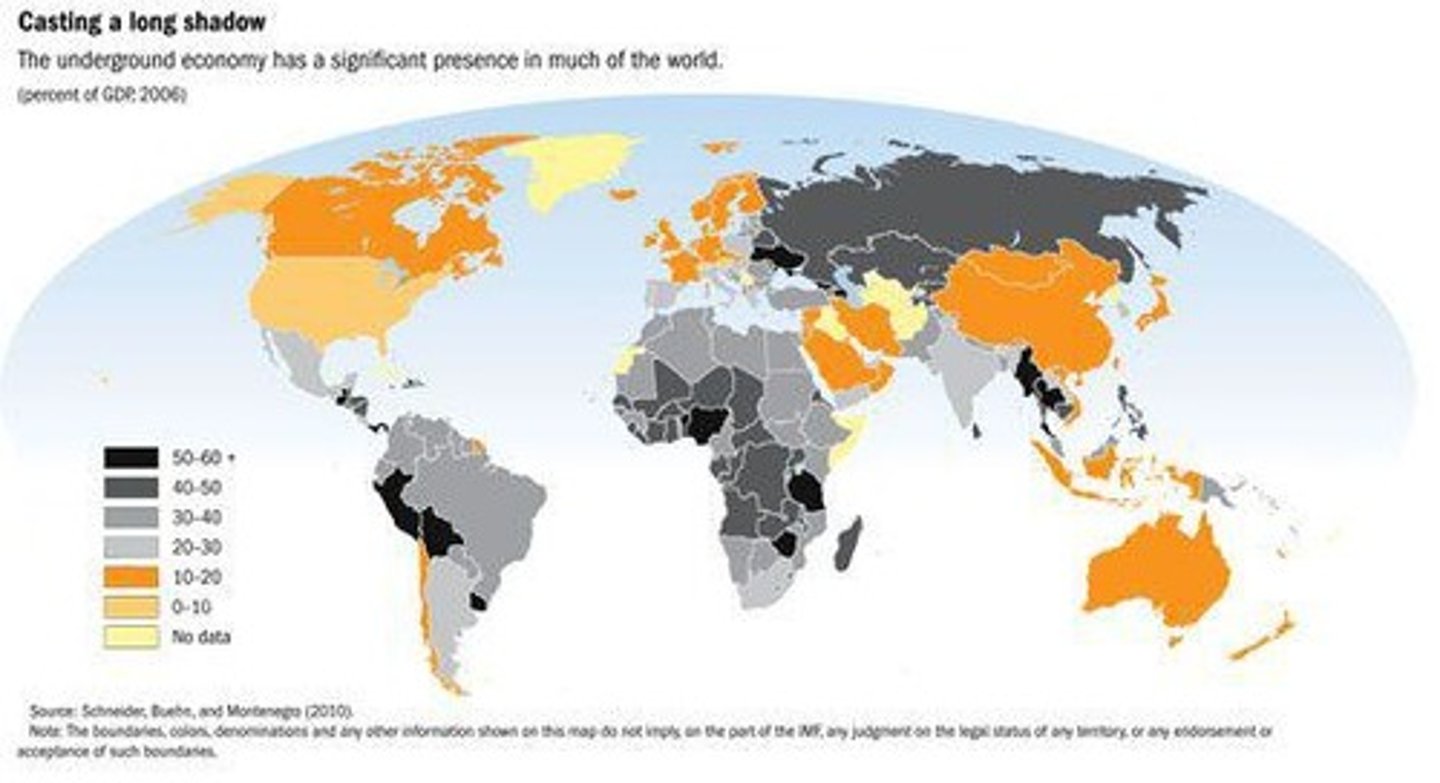
Demographic Transition Model
A sequence of demographic changes in which a country moves from high birth and death rates to low birth and death rates through time. Stages 1-5. LDC=>NIC=>MDC.
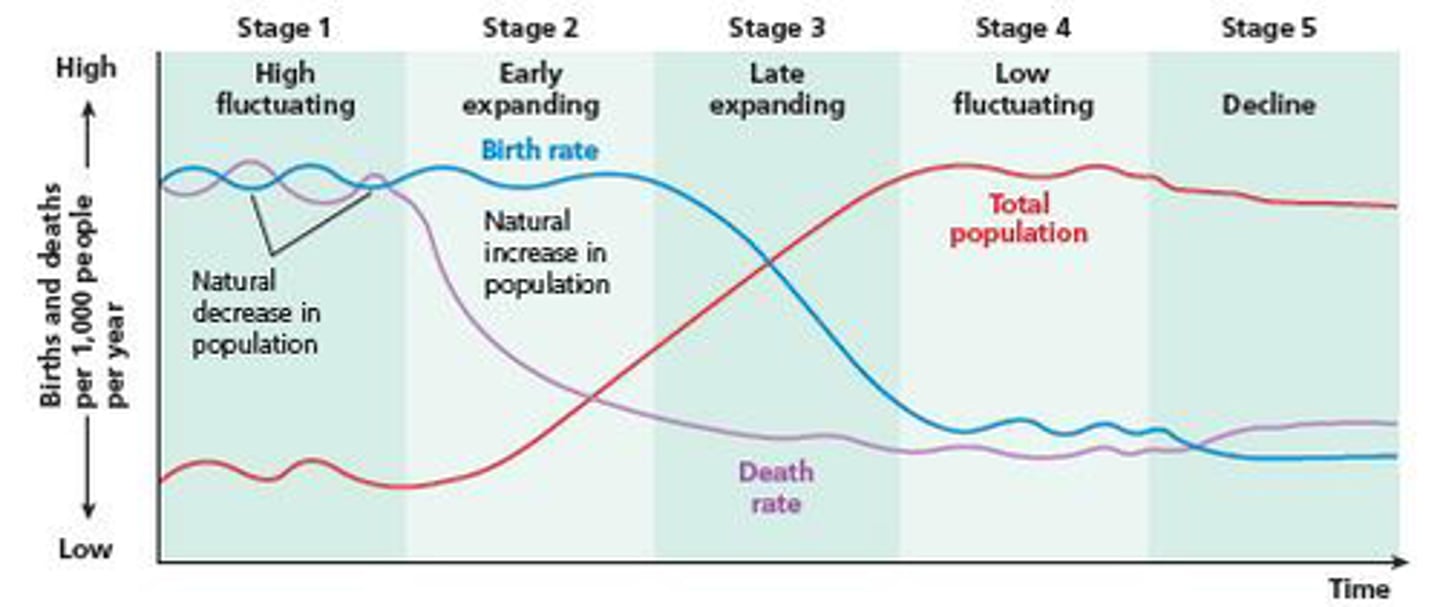
Epidemiological Transition Model
The theory that says that there is a distinct cause of death in each stage of the demographic transition model. It can help explain how a country's population changes so dramatically.
Stage 5 is potential epidemic and pandemic due to globalization.
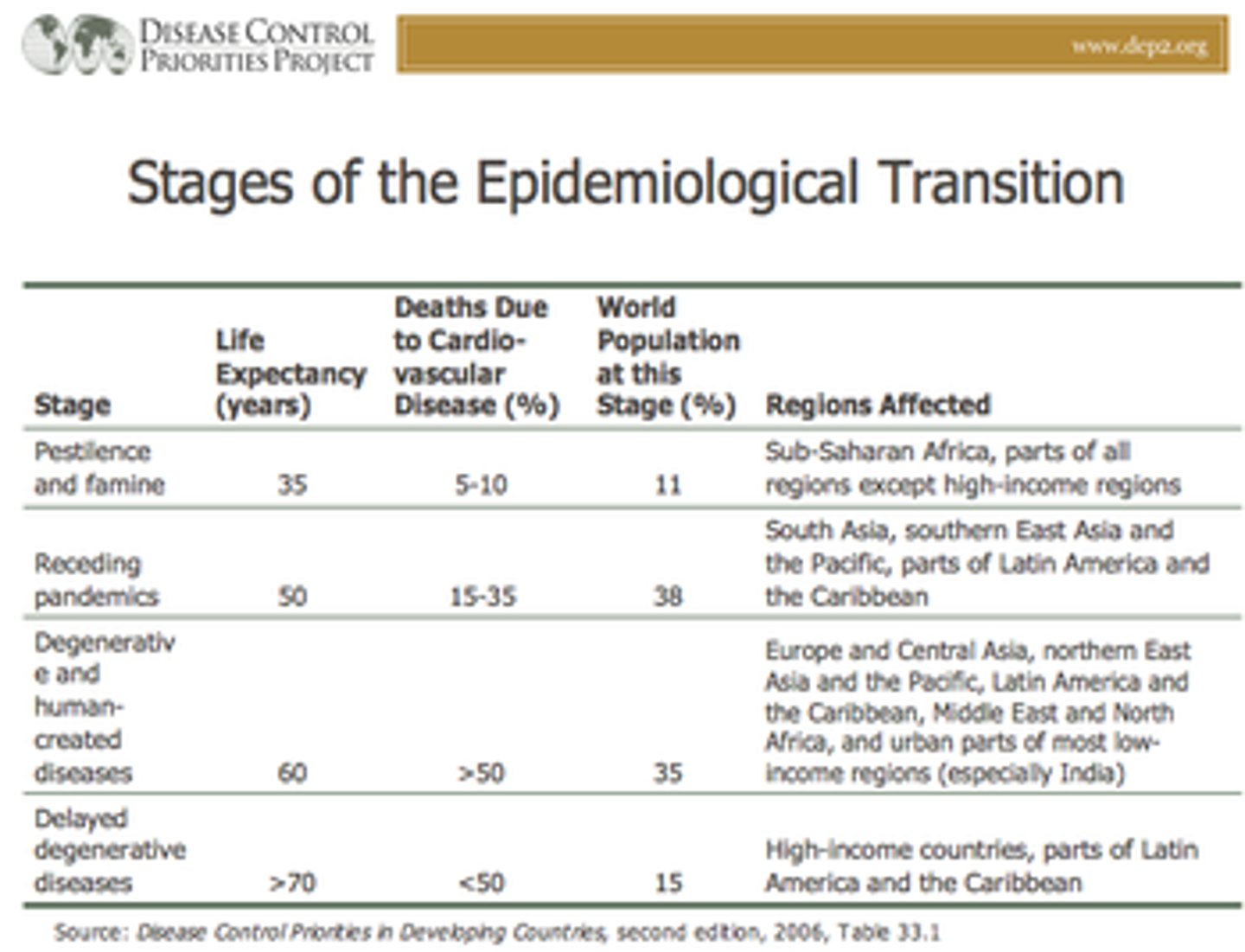
Malthusian Theory
The theory that population grows faster than food supply. Exponential Growth vs. Arithmetic Growth. Where the two lines cross is potential point of crisis.

Neo-Malthusian Theory
Revisions of Malthusian theory about food production and population growth that include more information, such as taking into account the effects of technology. However, population compromised due to environmental predicaments like drought, political predicaments like war and the exhaustion of non-renewable resources can all lead to point of crisis.
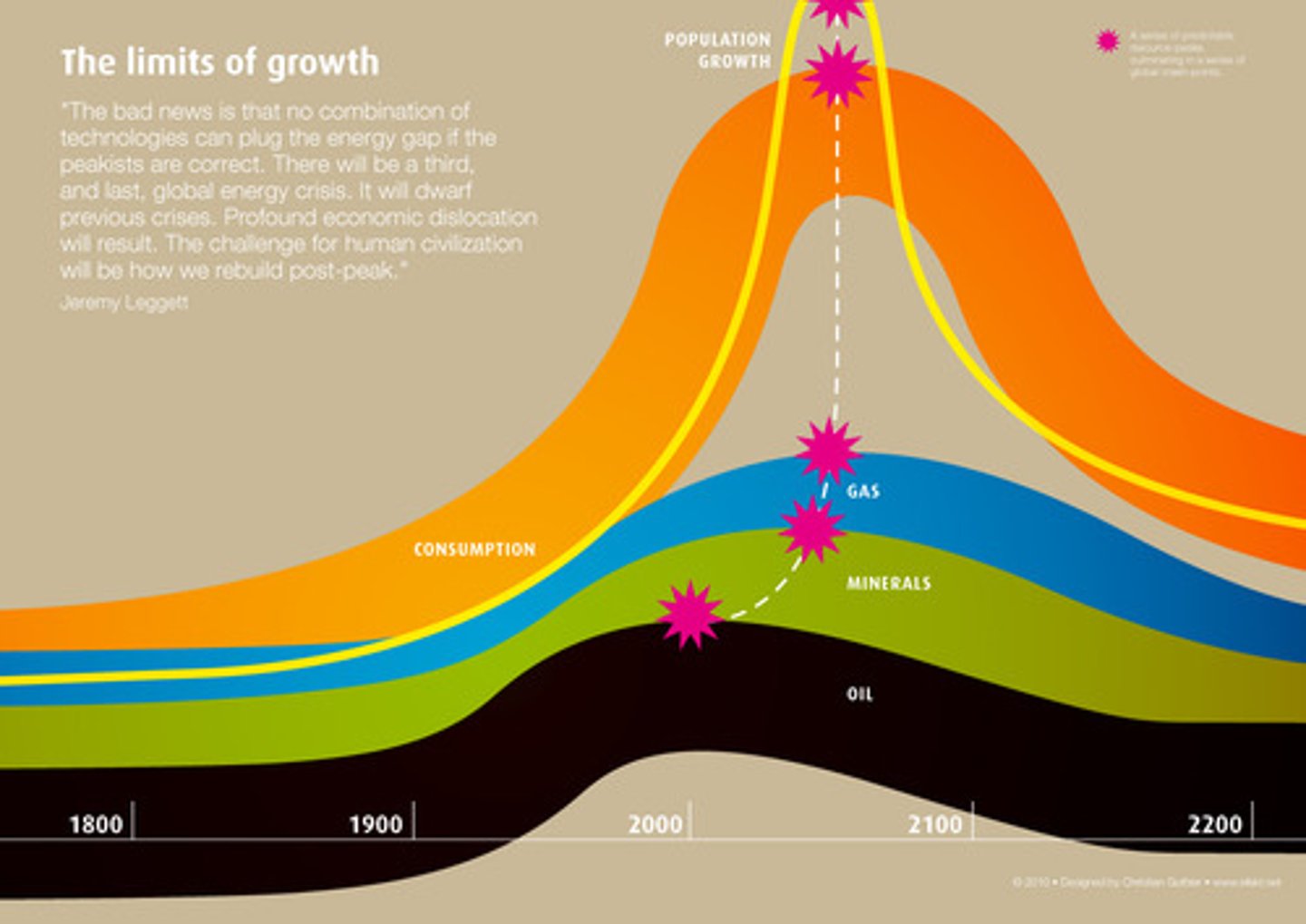
Boserup Theory (Esther Boserup)
When greater food production is needed, humans will find a way either through intensifying land use or developing new technology. Subsistence farmers want the most leisure time they can have, so they farm in ways that will allow them both to feed their families and to maximize free time.
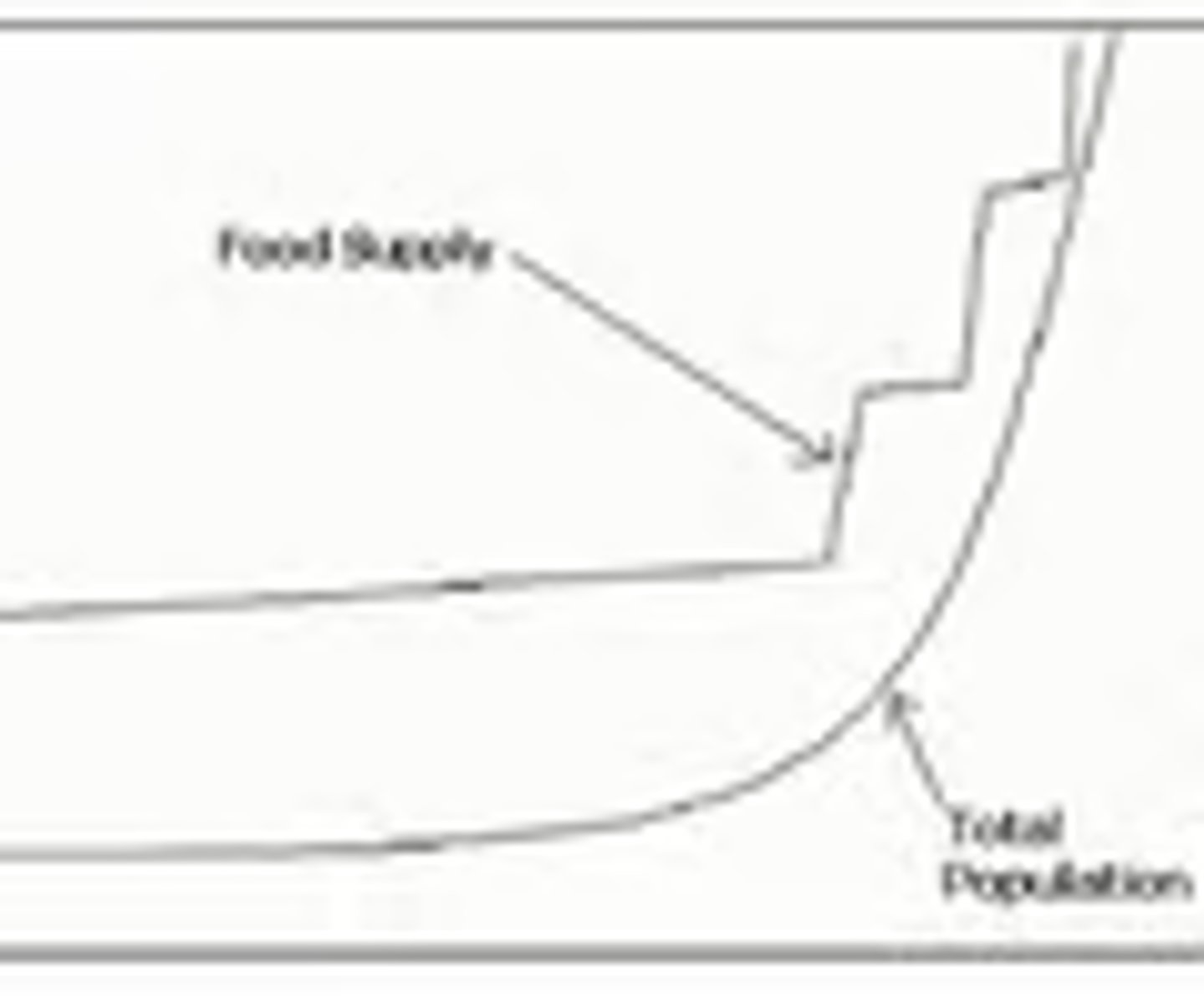
Anti-Natalist Policy
A population policy designed to limit fertility through the use both of incentives and deterrents. China's former one-child policy and Kenya's 5 children to 3 children by 2030 are examples. +2.1 replacement, typically 4-5.
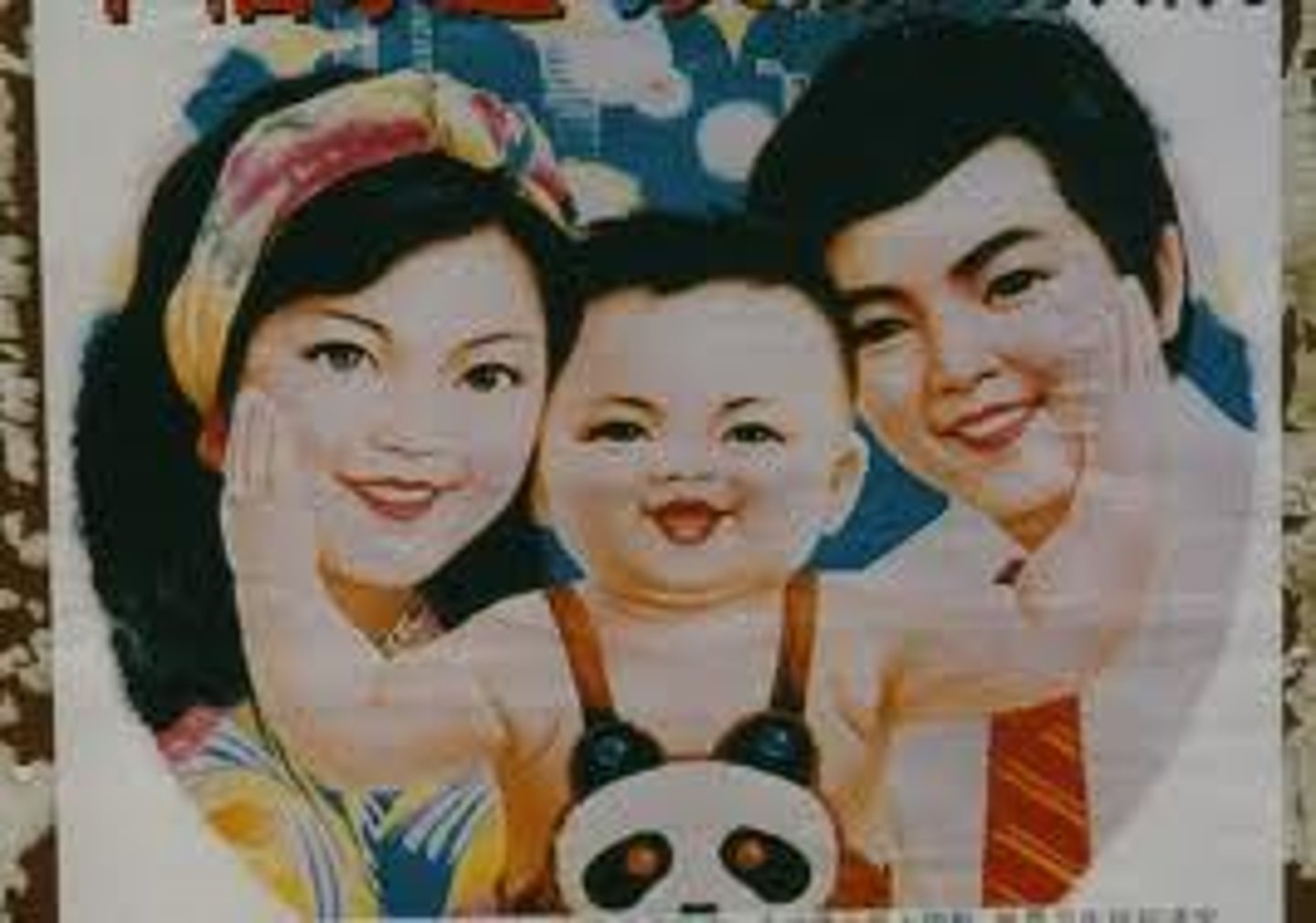
Pro-Natalist Policy
A population policy that aims to encourage more births through the use of incentives, sense of duty and nationalism. Countries in stage 5 employ these policies like that of Japan, France and Norway. China is projecting stage 5 and has implemented the 3-Child Policy. -2.1 replacement.
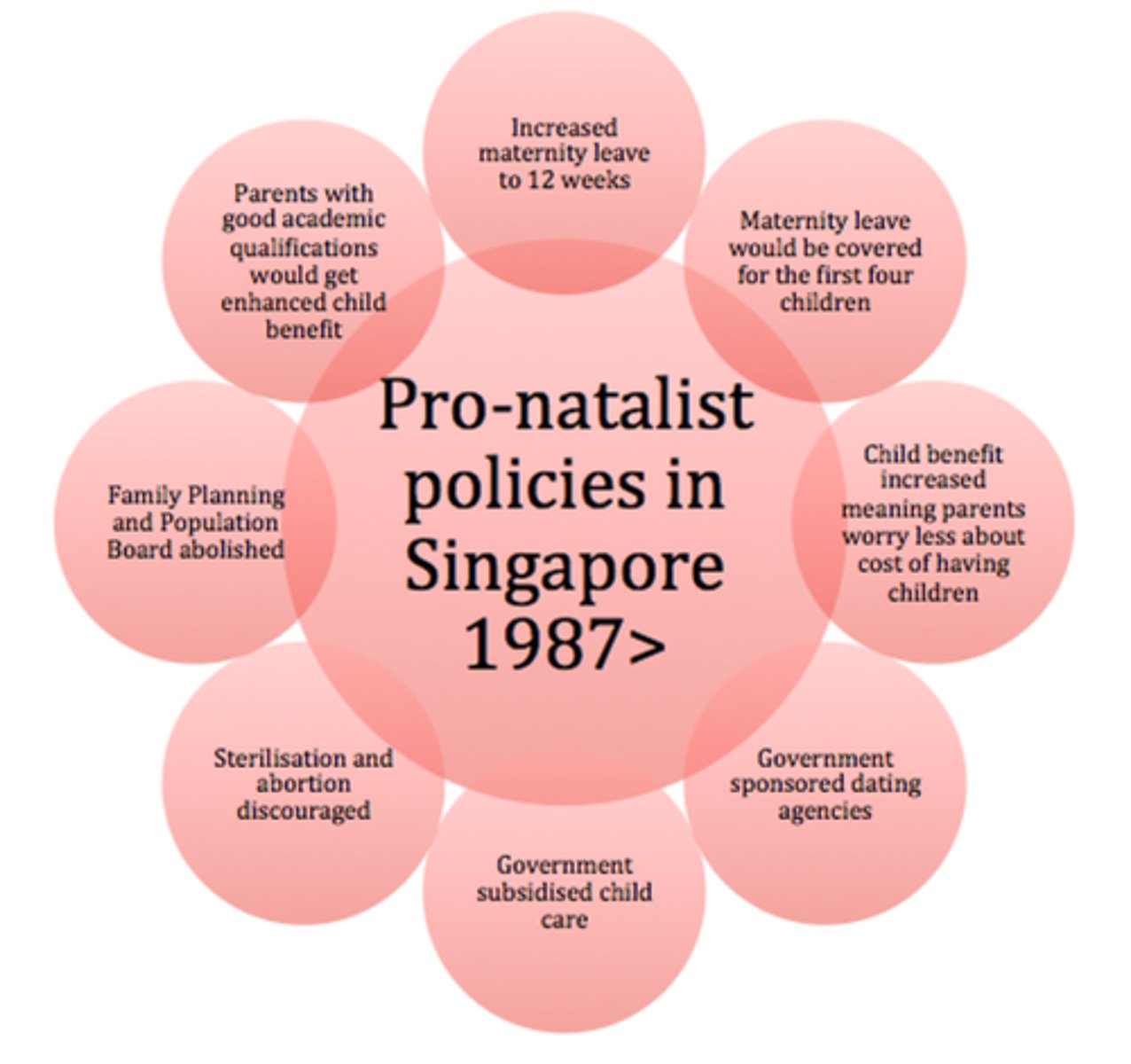
Aging Population Impact/Problems
Increased elderly care needs in healthcare.
Not enough young to look after them or to be party of the future workforce.
Migration Transition Model
Countries in stages 2 and 3 of the demographic transition model experience rapid population growth and overcrowding. This overcrowding then is a push factor forcing migration to 4s and 5s. limits
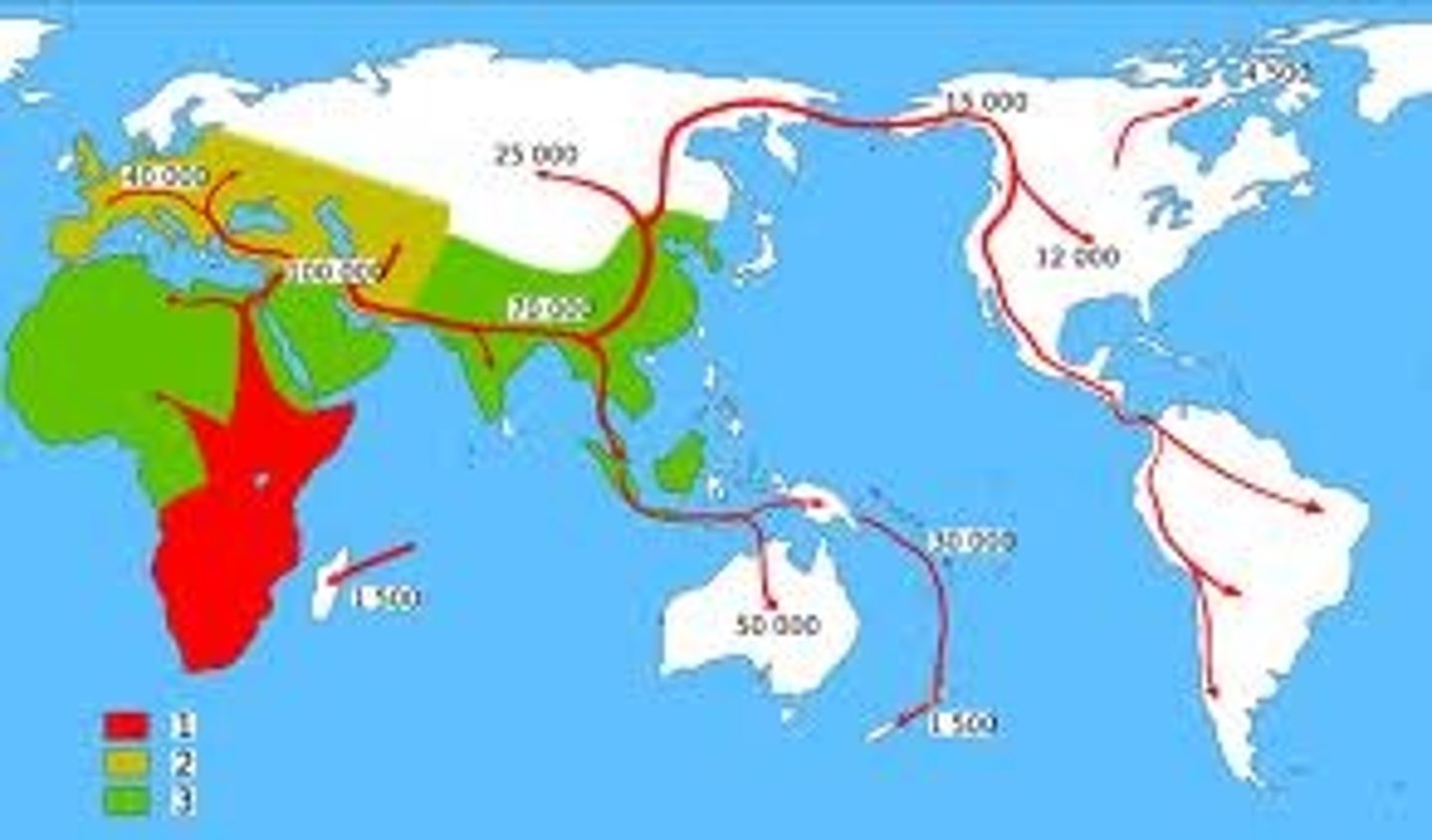
Ravenstein's Laws of Migration
1. Most migration is over a short distance. 2. Migration occurs in steps. 3. Long-range migrants usually move to urban areas. 4. Each migration produces a movement in the opposite direction (although not necessarily of the same volume). 5. Rural dwellers are more migratory than urban dwellers. 6. Within their own country females are more migratory than males, but males are more migratory over long distances. 7. Most migrants are adults. 8. Large towns grow more by migration than by natural increase. 9. Migration increases with economic development. 2. Migration is mostly due to economic causes.
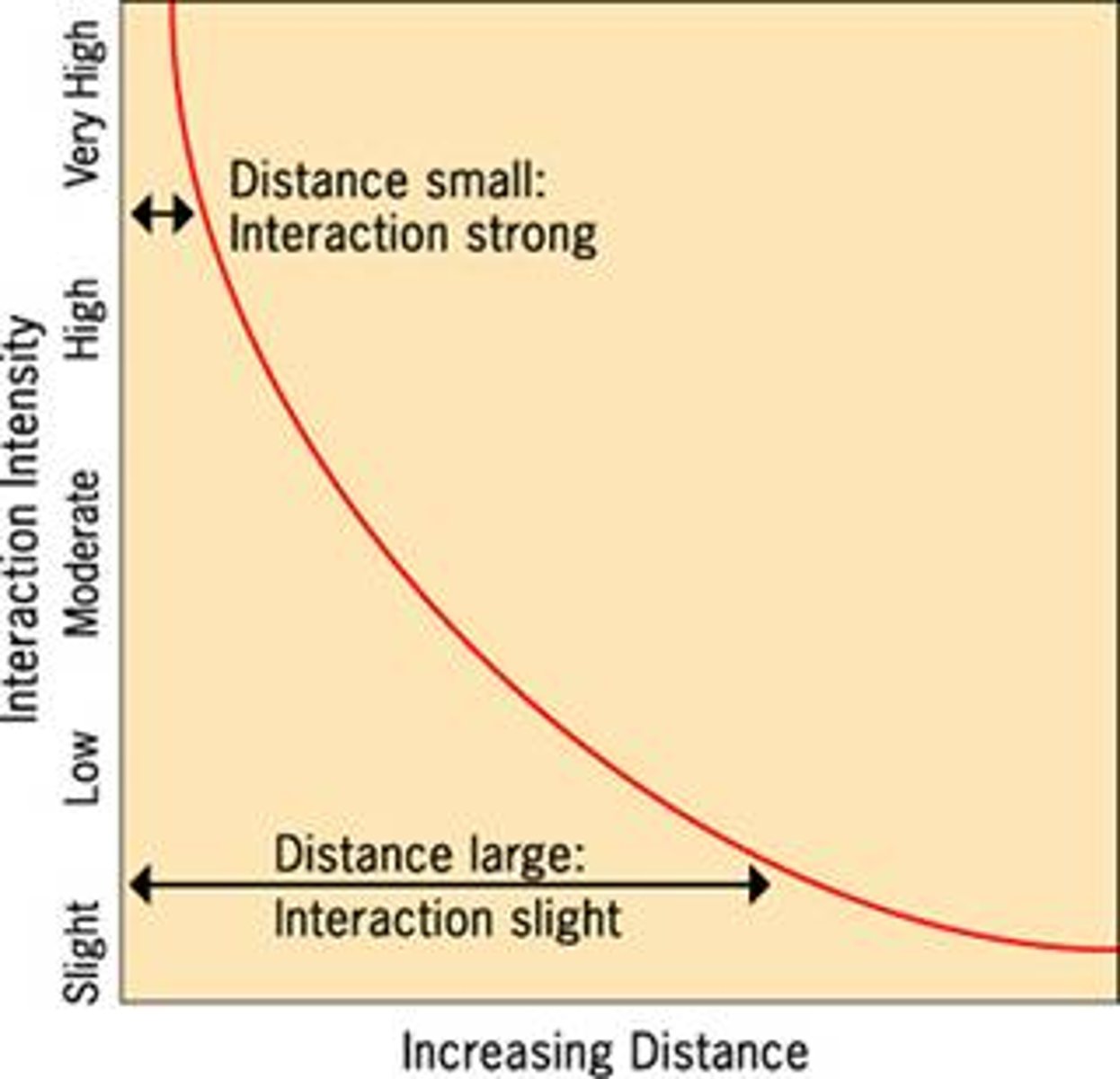
Step Migration
Migration to a distant destination that occurs in stages, for example, from farm to nearby village and later to a town and city. Potentially from country to country too. Libya is a step to destinations in Europe.
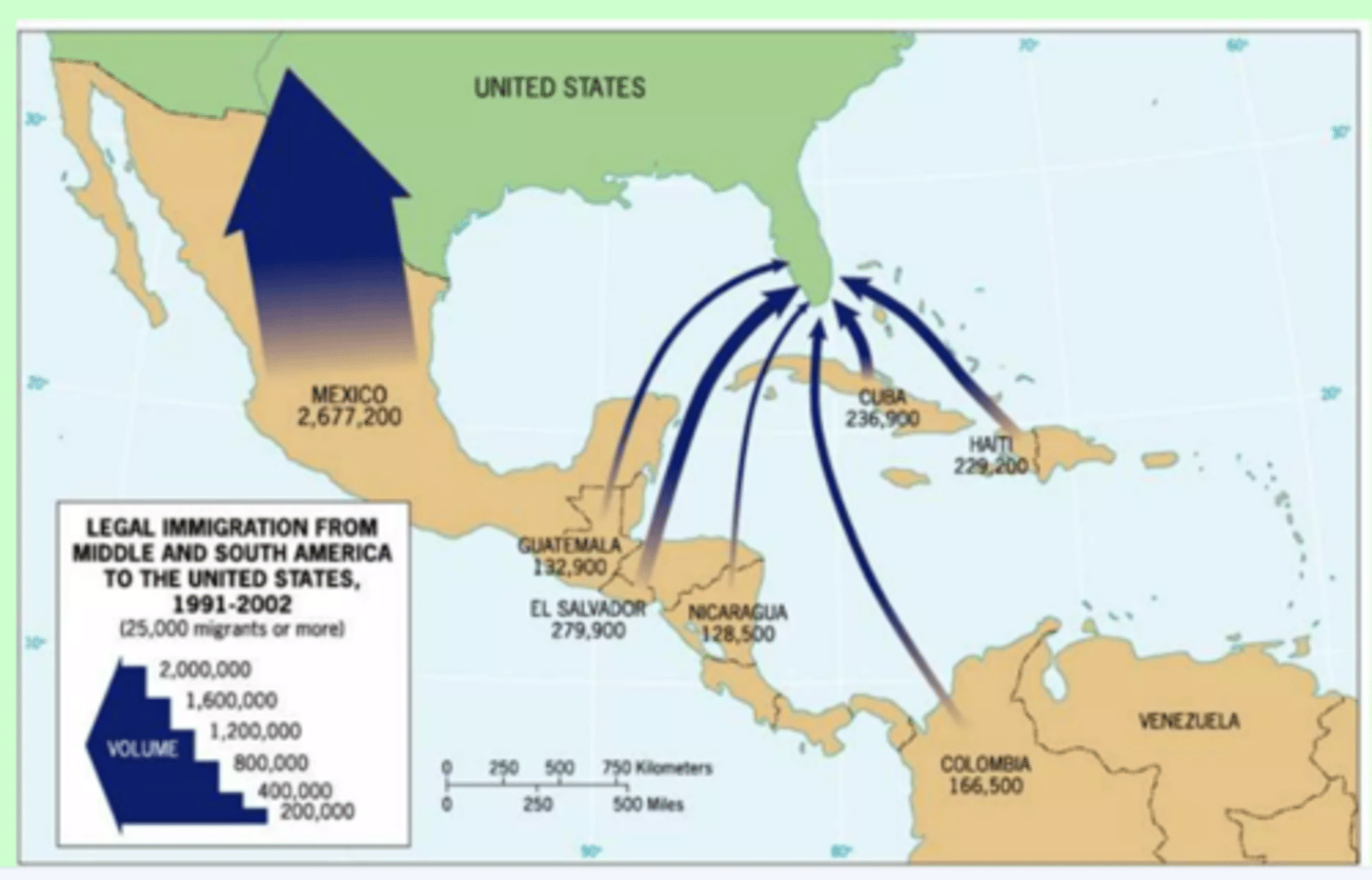
Chain Migration
The migration event in which individuals follow the migratory path of preceding friends or family members to an existing community.
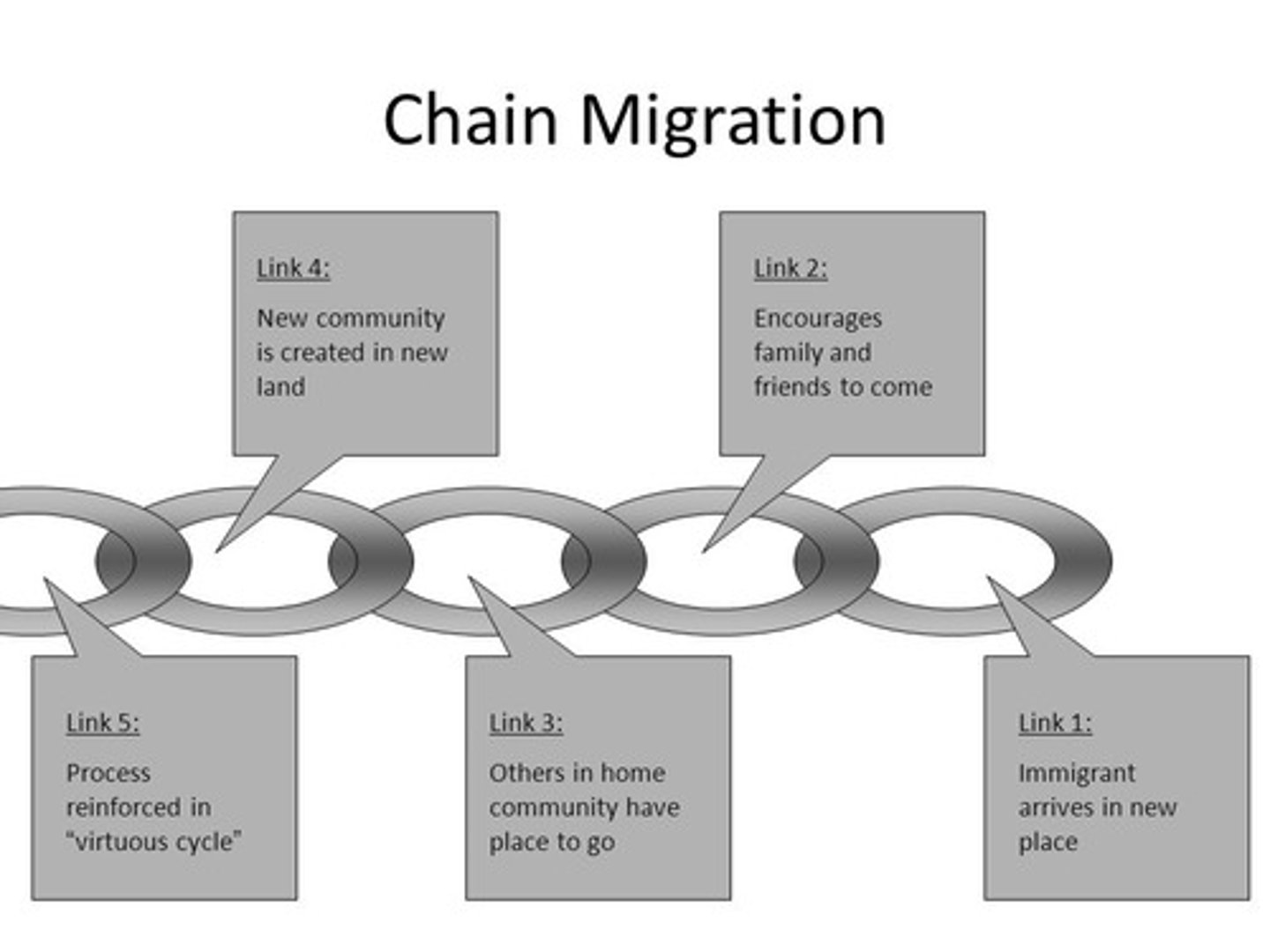
Return Migration
The likelihood that as many as 25% of all migrants will return to their place of origin (counter migration).

Rural to Urban Migration
Permanent movement from suburbs and rural area to the urban city area. It is predicted that 80% of a country's population will be living in urban centers by 2050.

Time-Distance Decay and Migration
Most people only travel short distances. Few people have the means to migrate long distances. Women typically do not migrate far away.
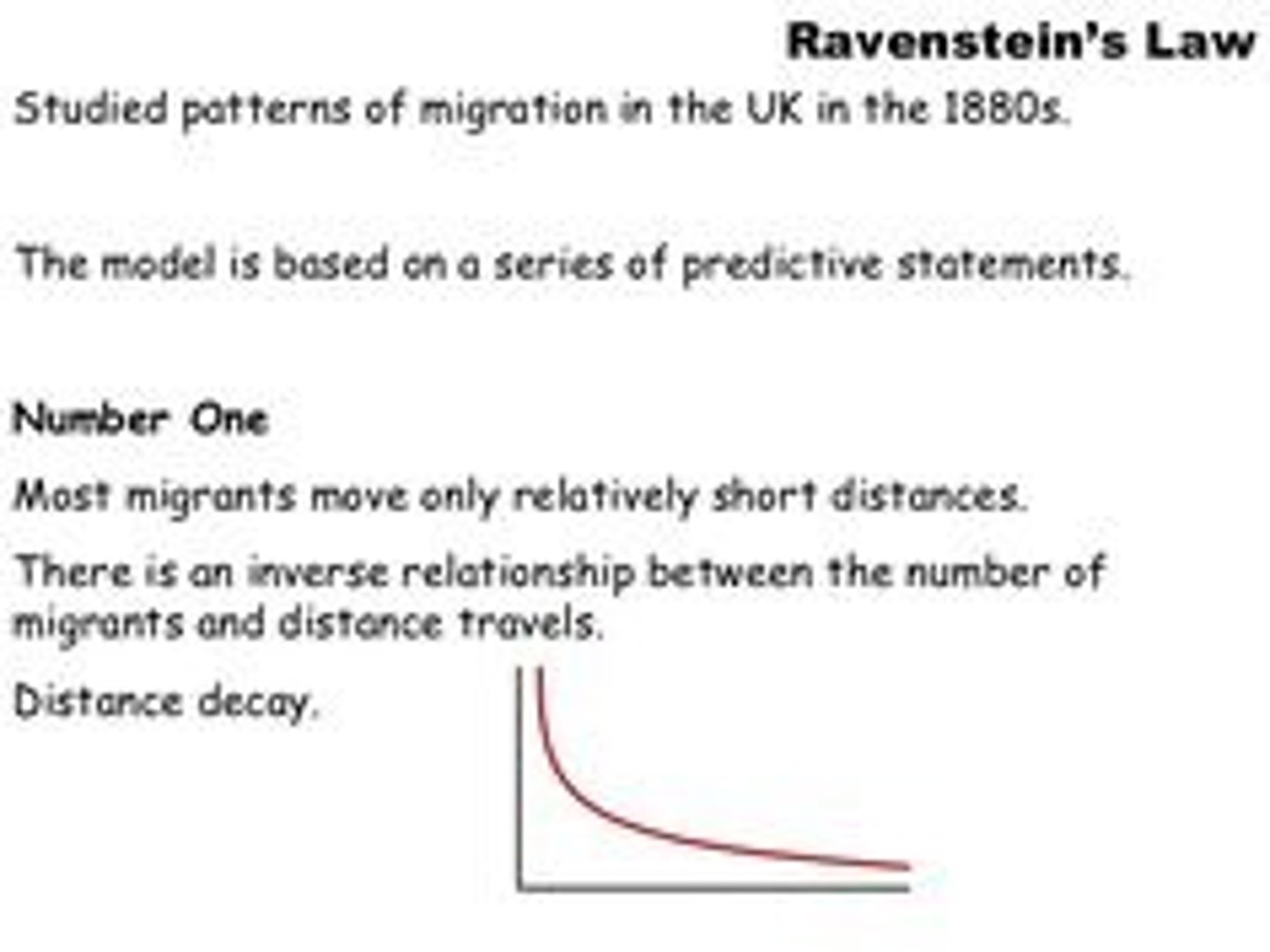
Counter Migration
Each migration flow produces a movement in the opposite direction. Typically overpopulation can produce a counter migration. Overpopulation for those can be push factor.
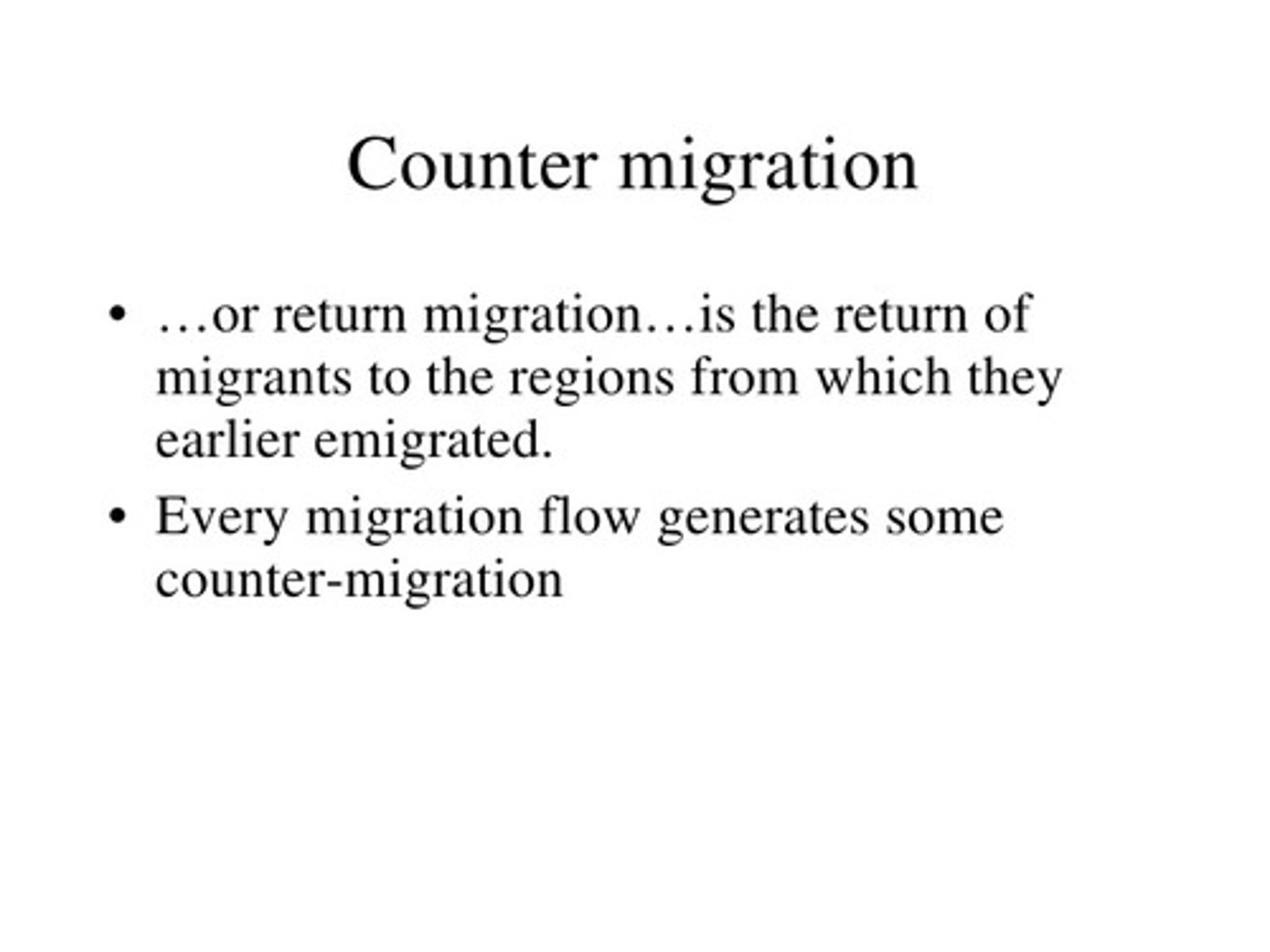
Forced Migration
Human migration flows in which the movers have no choice but to relocate, political instability, ethnic cleansing, human trafficking are examples.
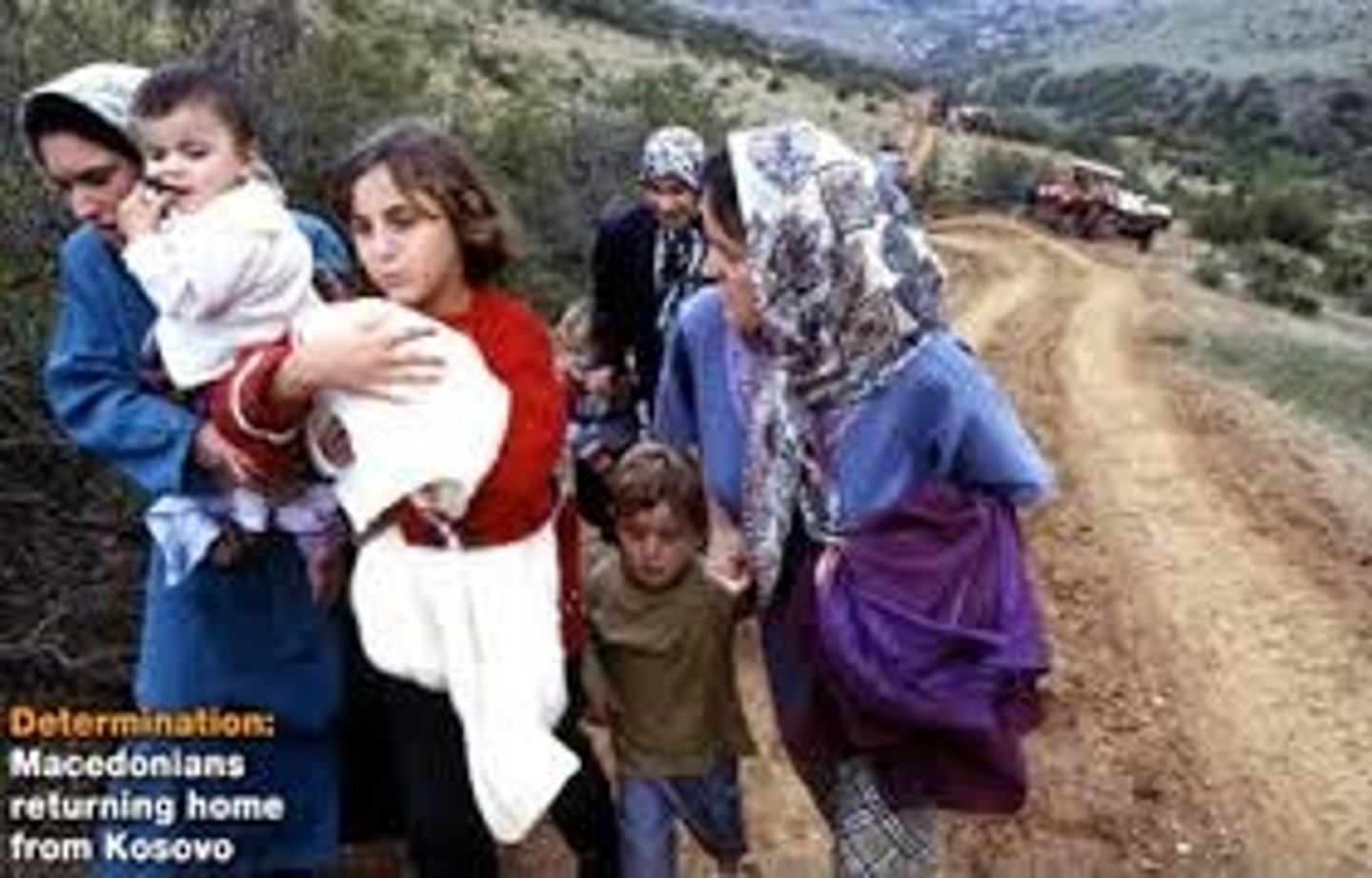
IDP
Internally displaced person, typically more vulnerable as they are unable to migrate further away from a conflict zone or a zone of which a natural disaster has occurred.

Refugee
A person who has been forced to leave their country in order to escape war, persecution, or natural disaster.
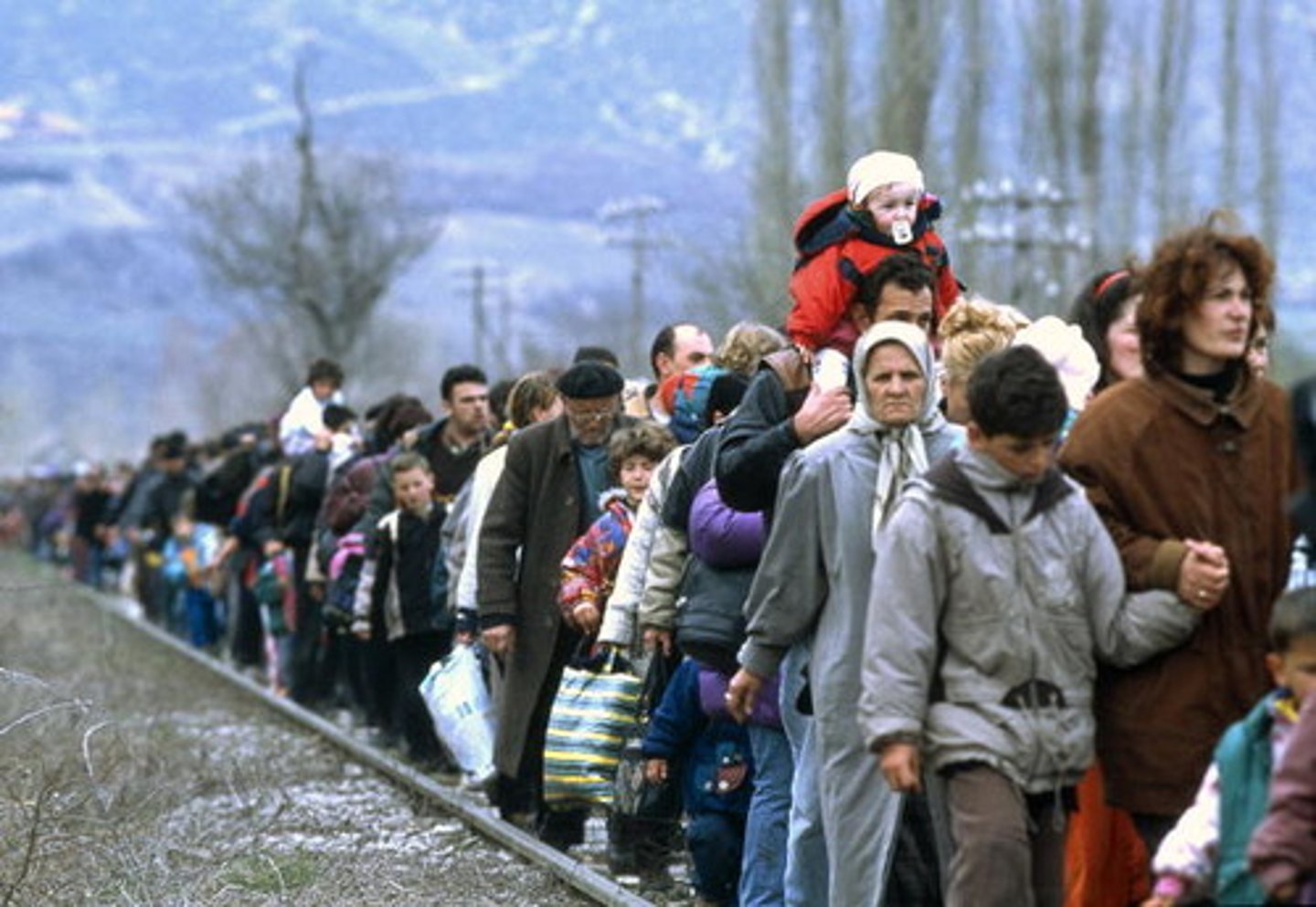
Transnational Migration
A form of population movement in which a person regularly moves between two or more countries and forms a new cultural identity transcending a single geopolitical unit. Culturall syncretism can occur.
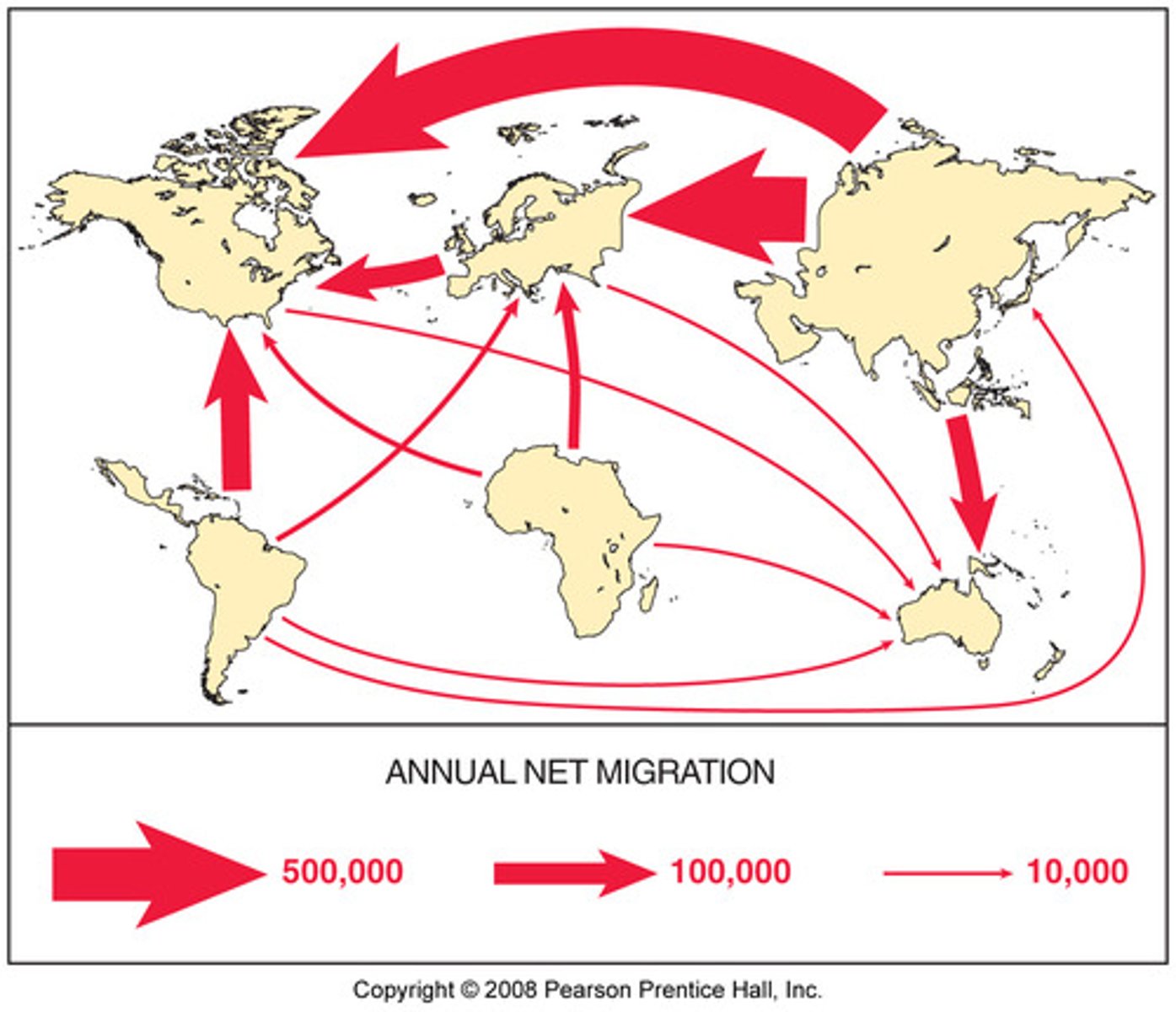
Guest Workers
Workers who migrate to the more developed countries of Northern and Western Europe, usually from Southern of Eastern Europe or from North Africa, in search of higher-paying jobs.

Xenophobia
A fear or hatred of foreigners or strangers.
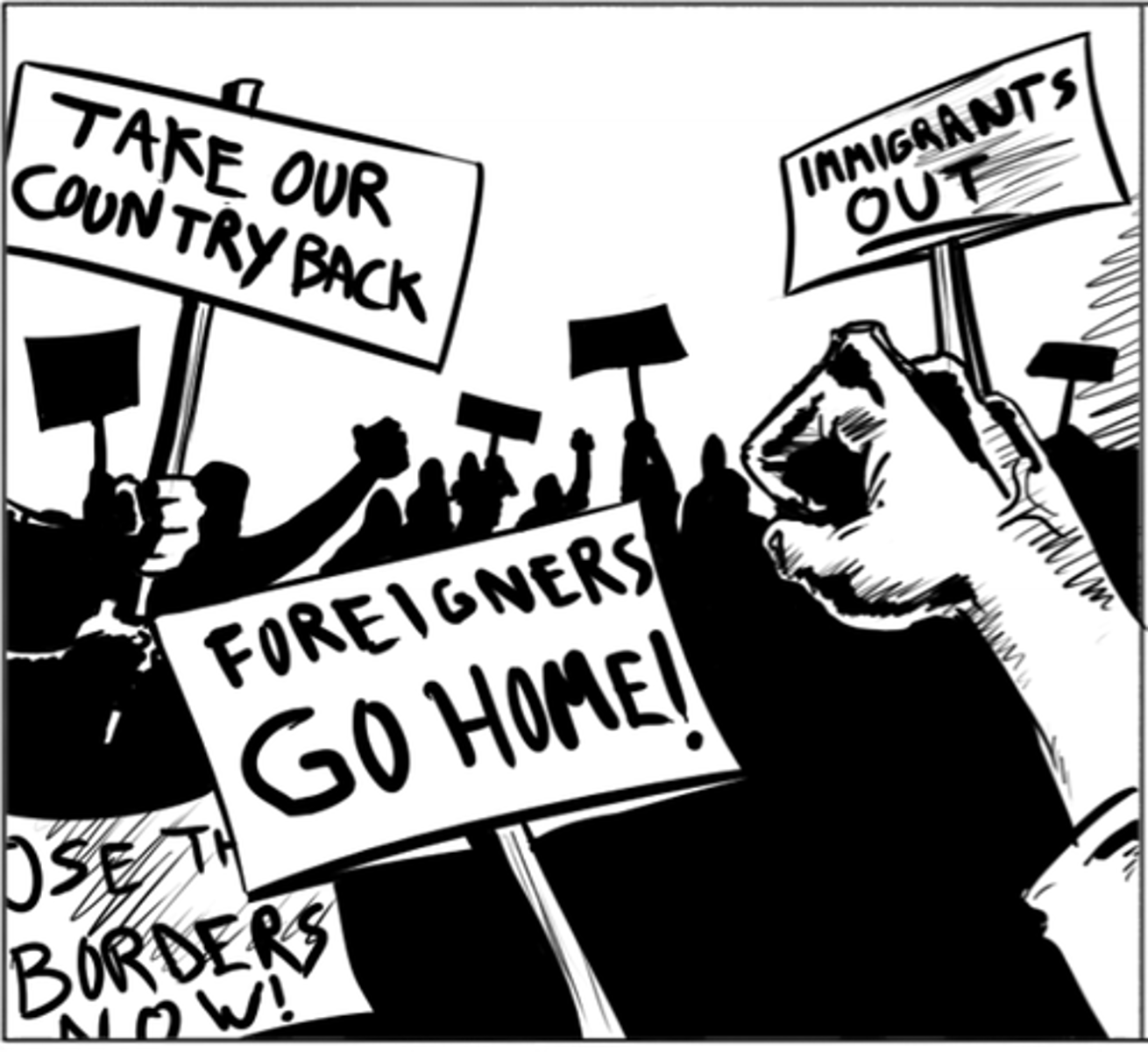
Brain Drain
Large-scale emigration by talented people. The educated leave their country for another.
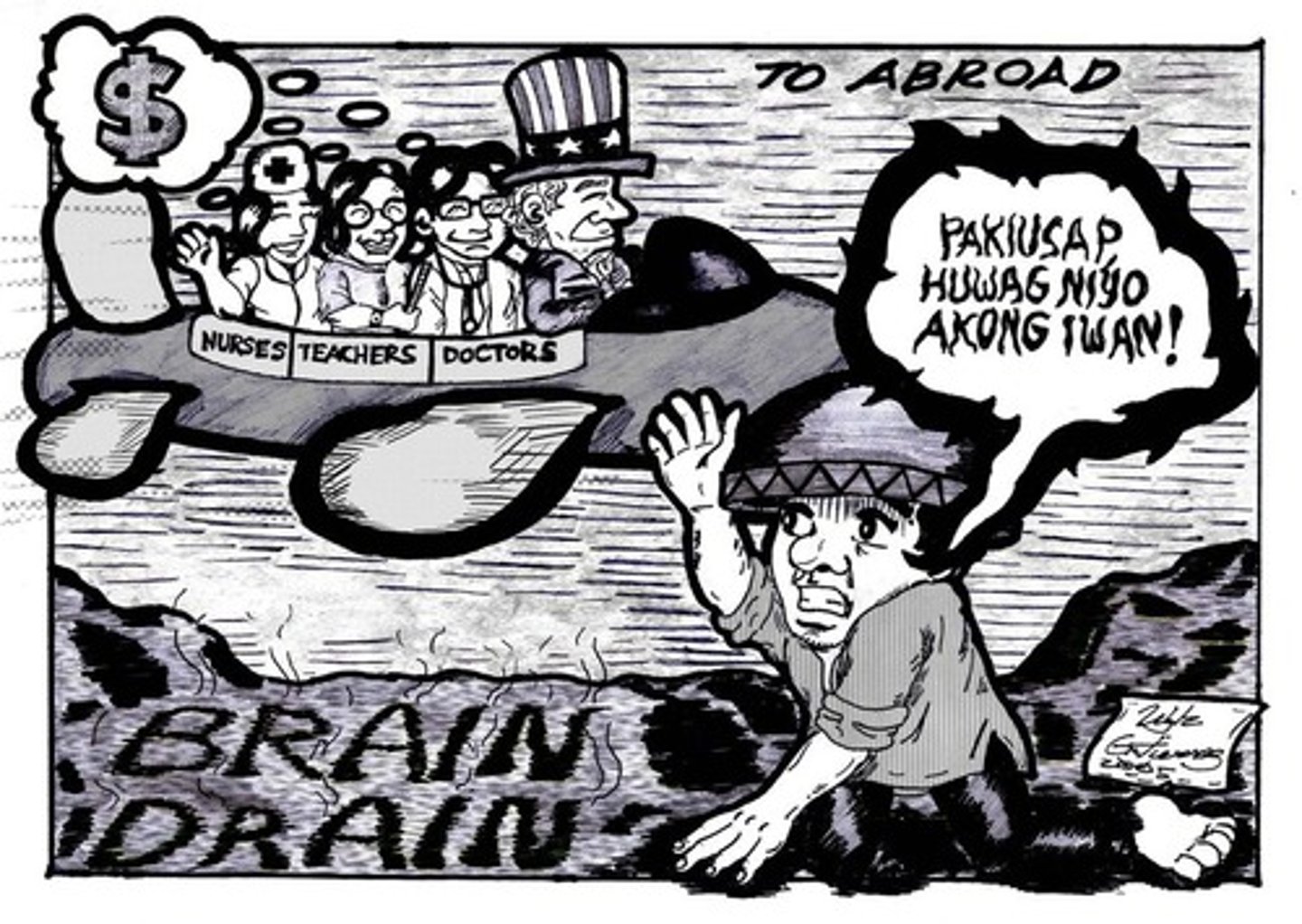
Brain Gain
A phenomenon where a country or a place gains young, more educated, and skilled people through migration.
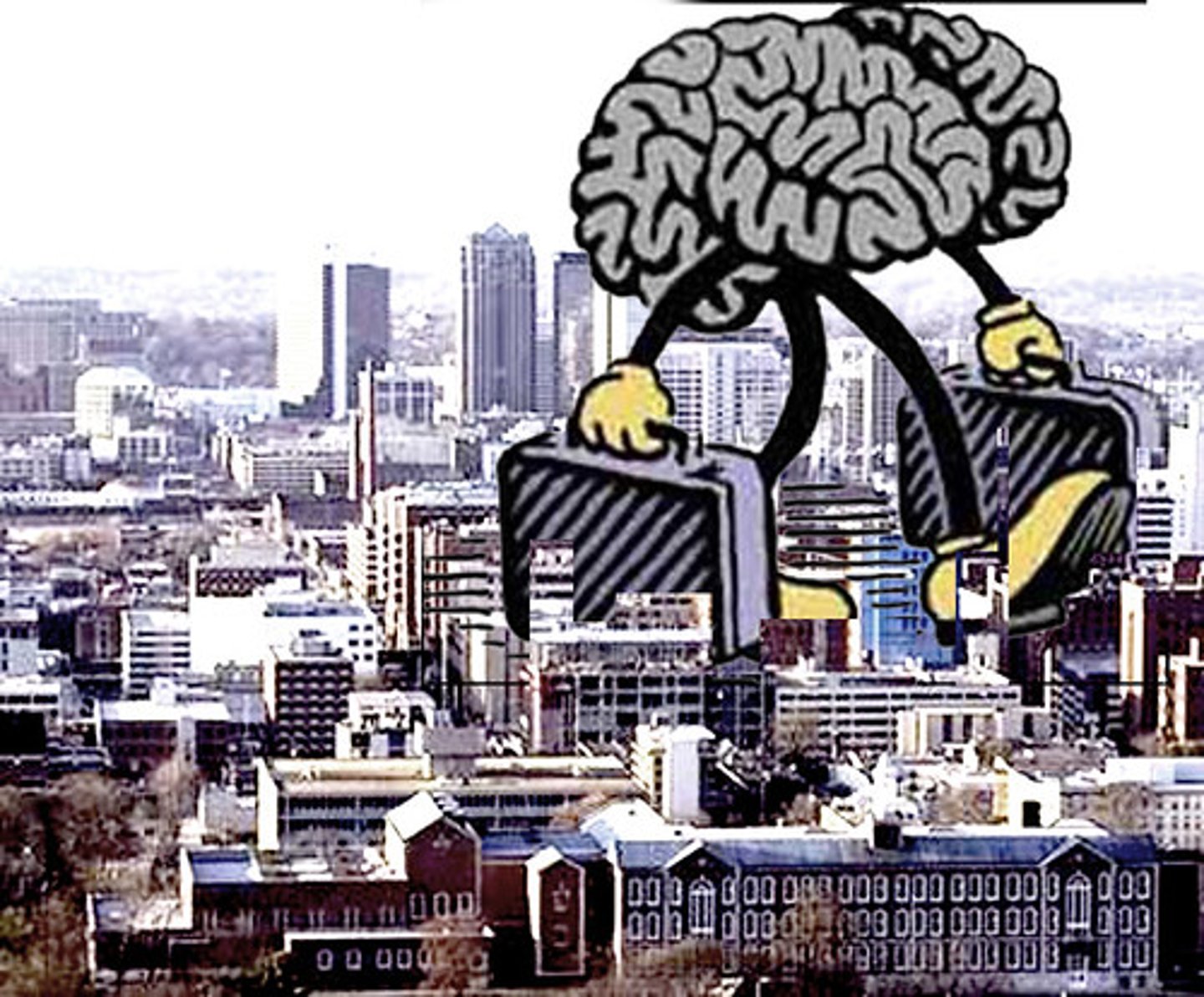
Remittances
Money migrants send back to family and friends in their home countries, often in cash, forming an important part of the economy in many poorer countries.
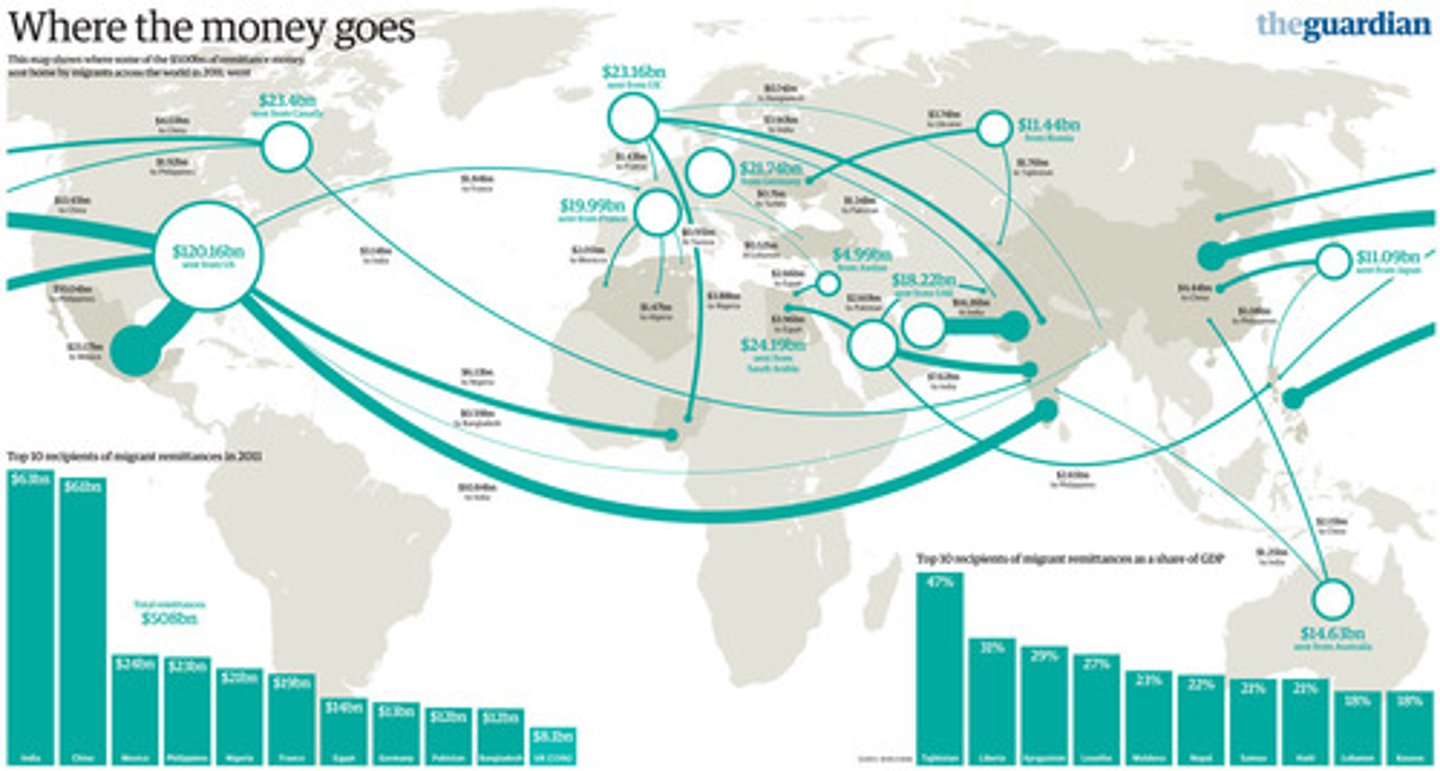
Ethnic Enclaves
Neighborhoods filled primarily with people of the same ethnic/cultural group. People are more likely to migrate to areas with lie cultures and ethnicities, China Town.
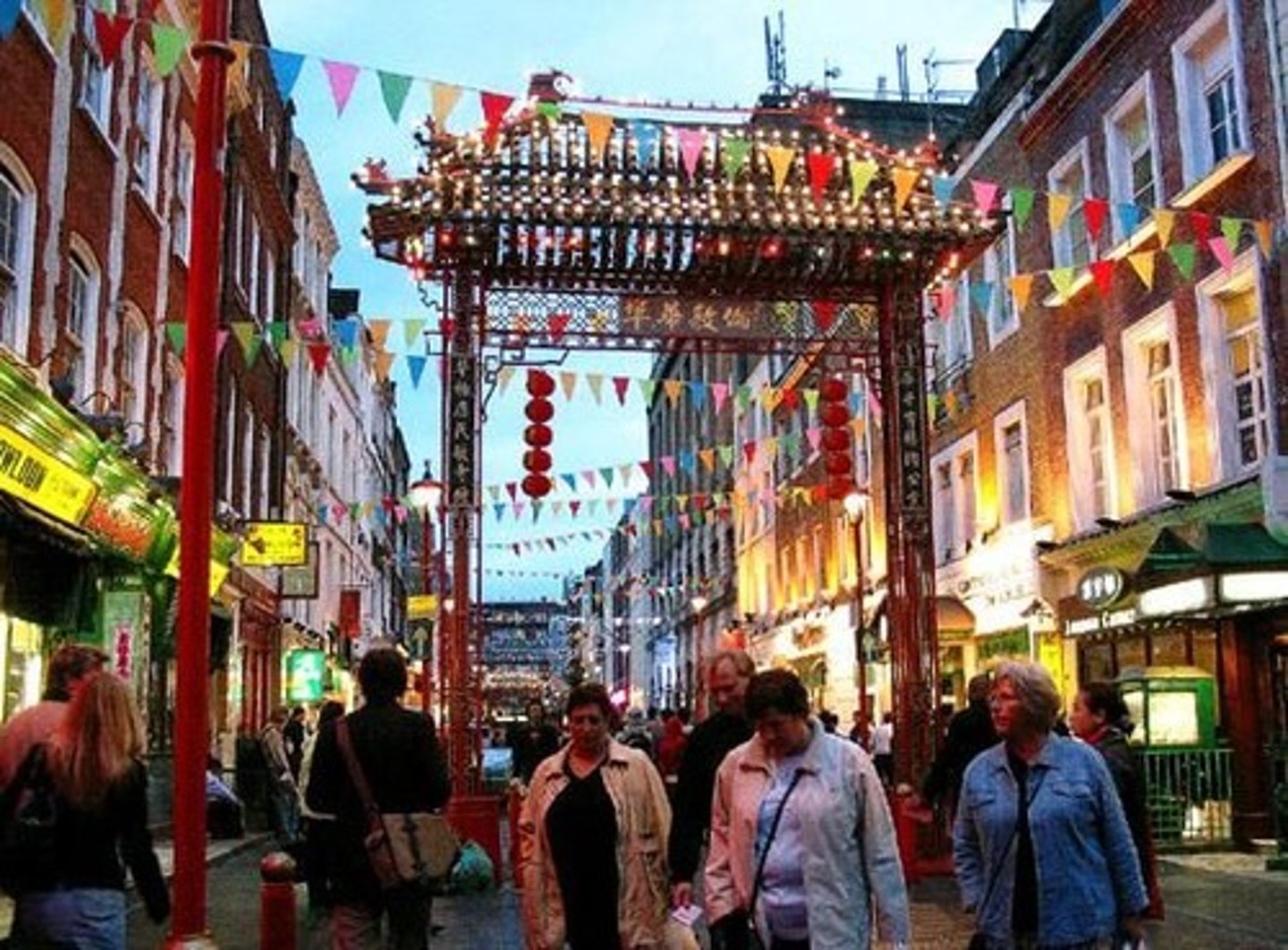
Demographic Momentum
This is the tendency for growing population to continue growing after a fertility decline because of their young age distribution. This is important because once this happens a country moves to a different stage in the demographic transition model.
Net Reproduction Rate (NRR)
Average # of daughters that would be born to a woman/group of women during her lifetime following age specific fertility rates and mortality rates of a given year.